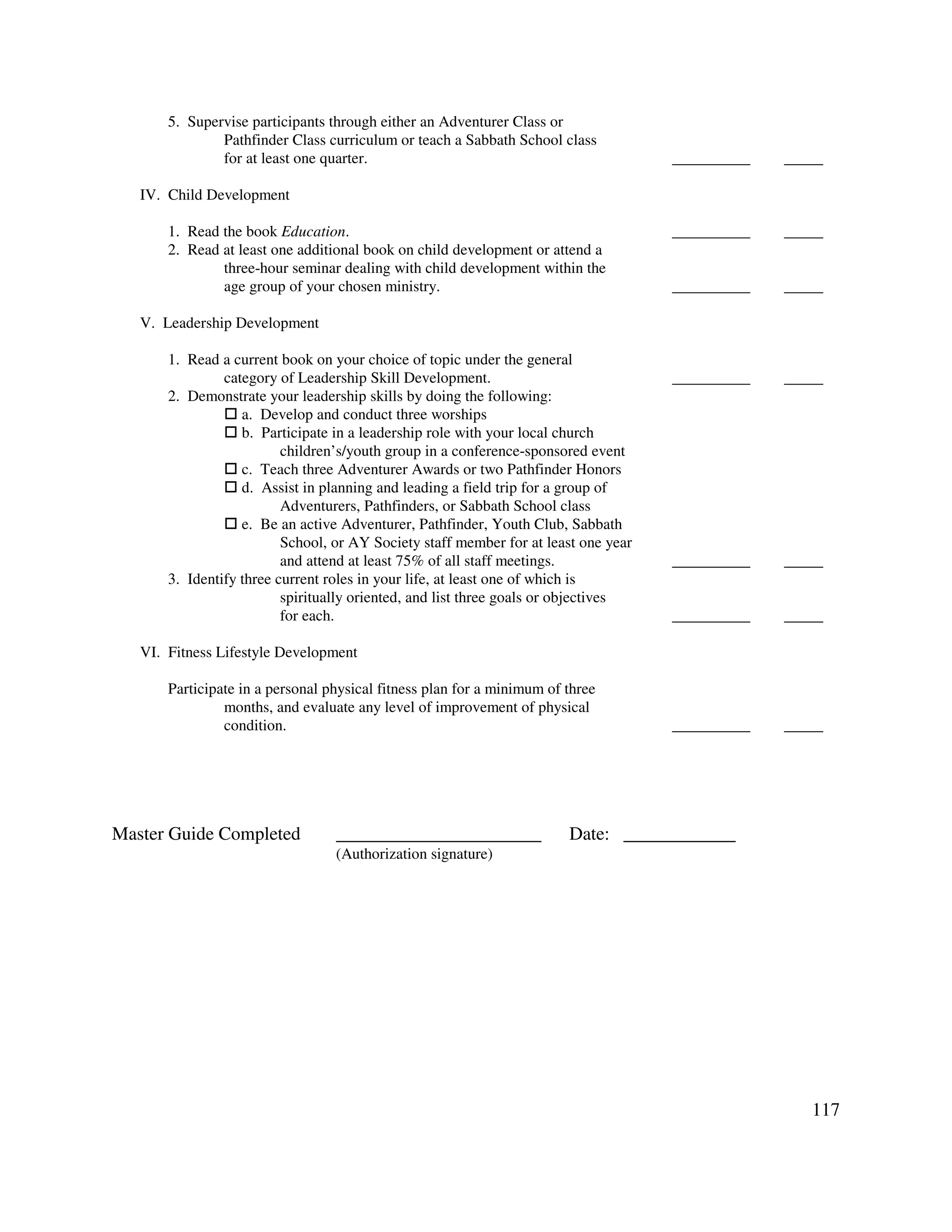This document outlines the requirements and curriculum for the Master Guide program, which is the highest level of leadership training for Adventurer and Pathfinder youth ministry programs. It has three parts: Part 1 is the Master Guide level, focusing on spiritual growth and general leadership skills. Part 2, the Pathfinder Leadership Award, provides continuing education to keep leaders sharp and up to date. Part 3, the Advanced Pathfinder Leadership Award, trains leaders to train others. The curriculum covers spiritual development, skills development, leadership development, child development, and adopting a lifestyle of fitness. Completing the requirements qualifies one for active leadership roles in local church youth ministry.

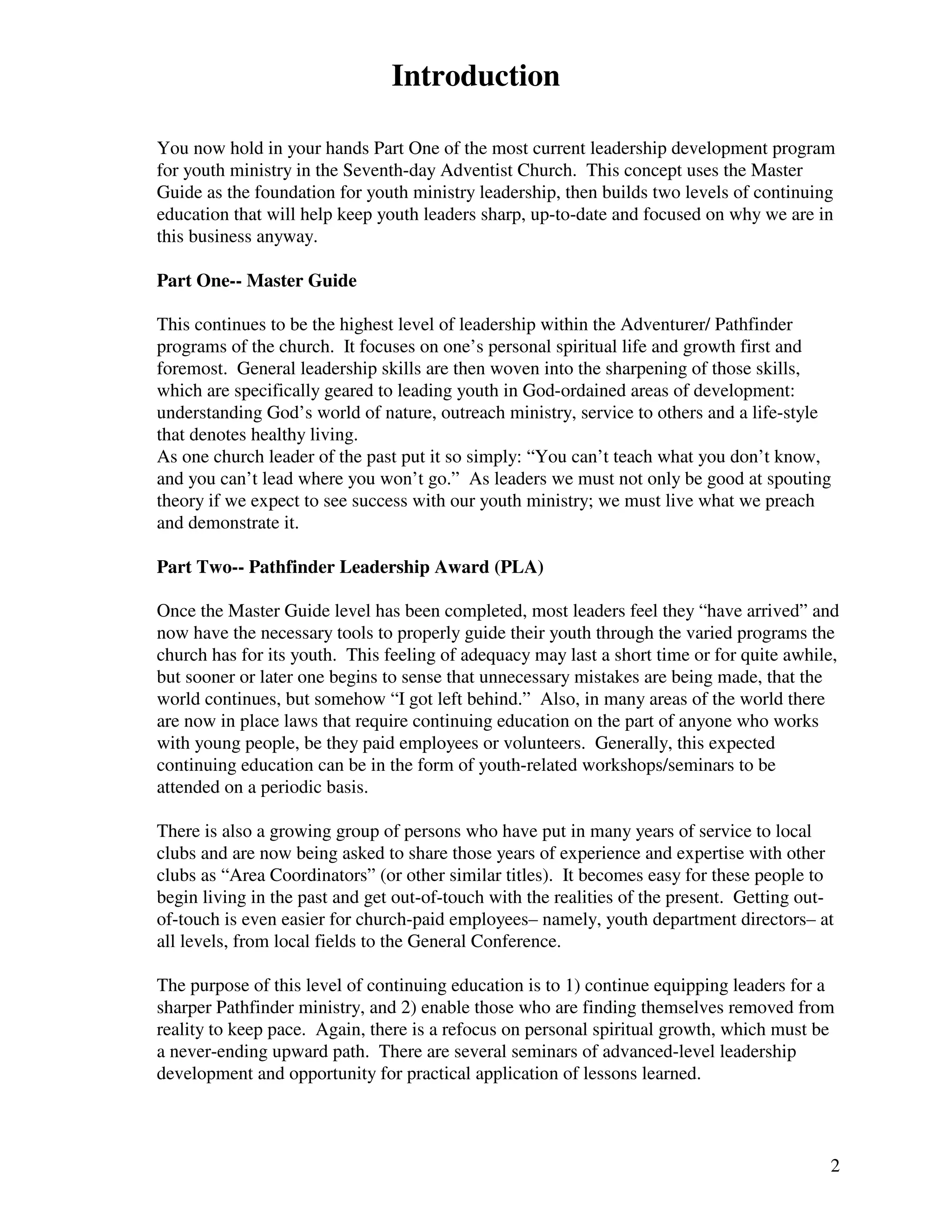


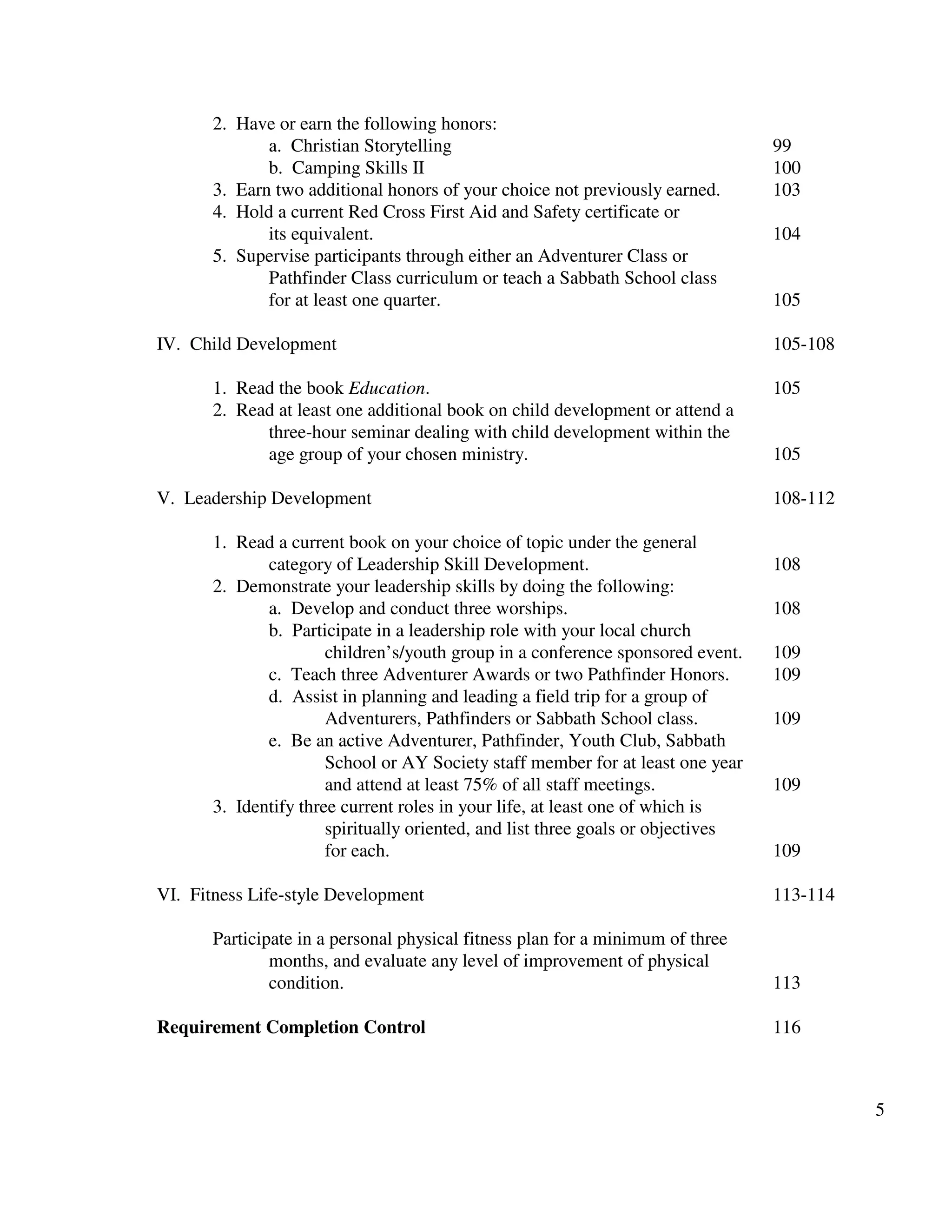

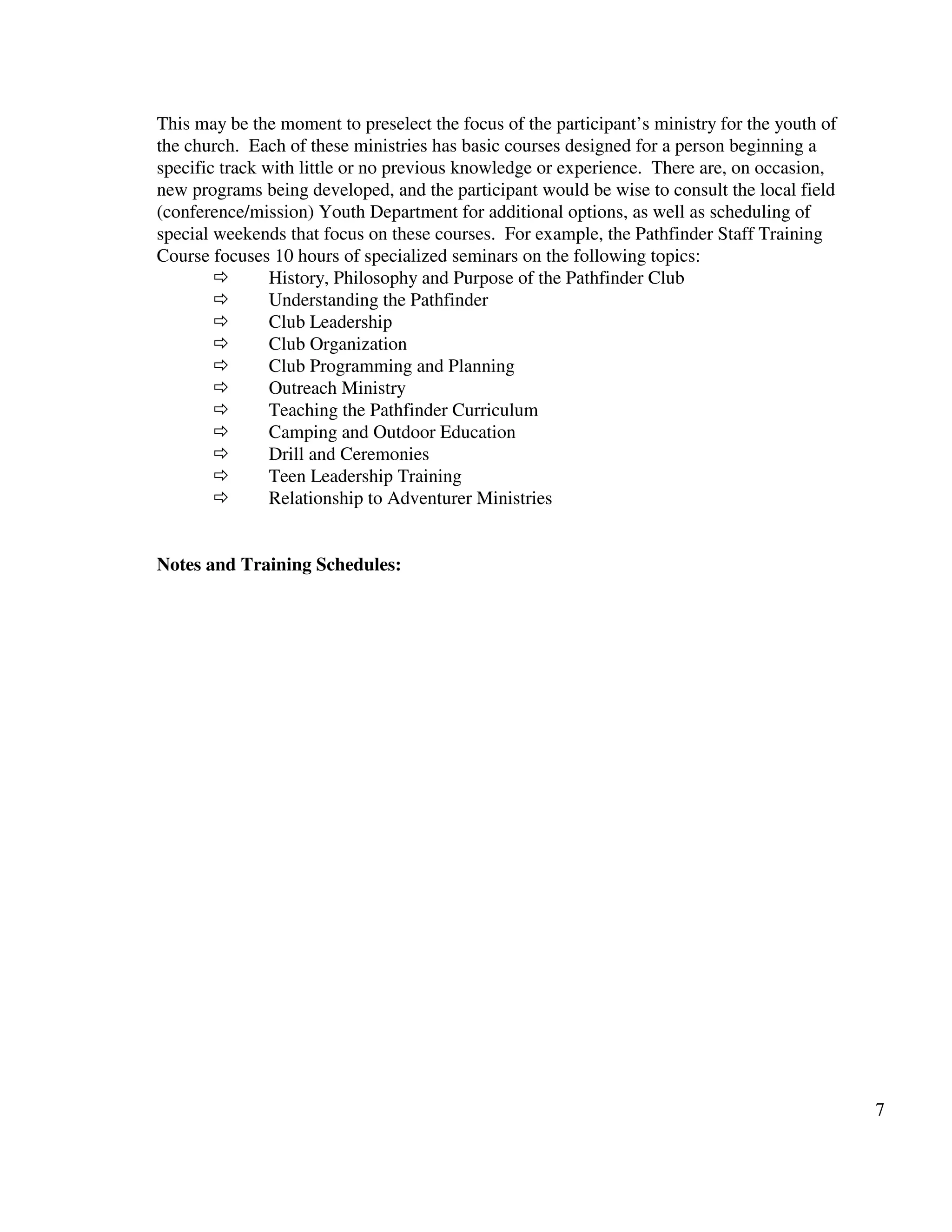



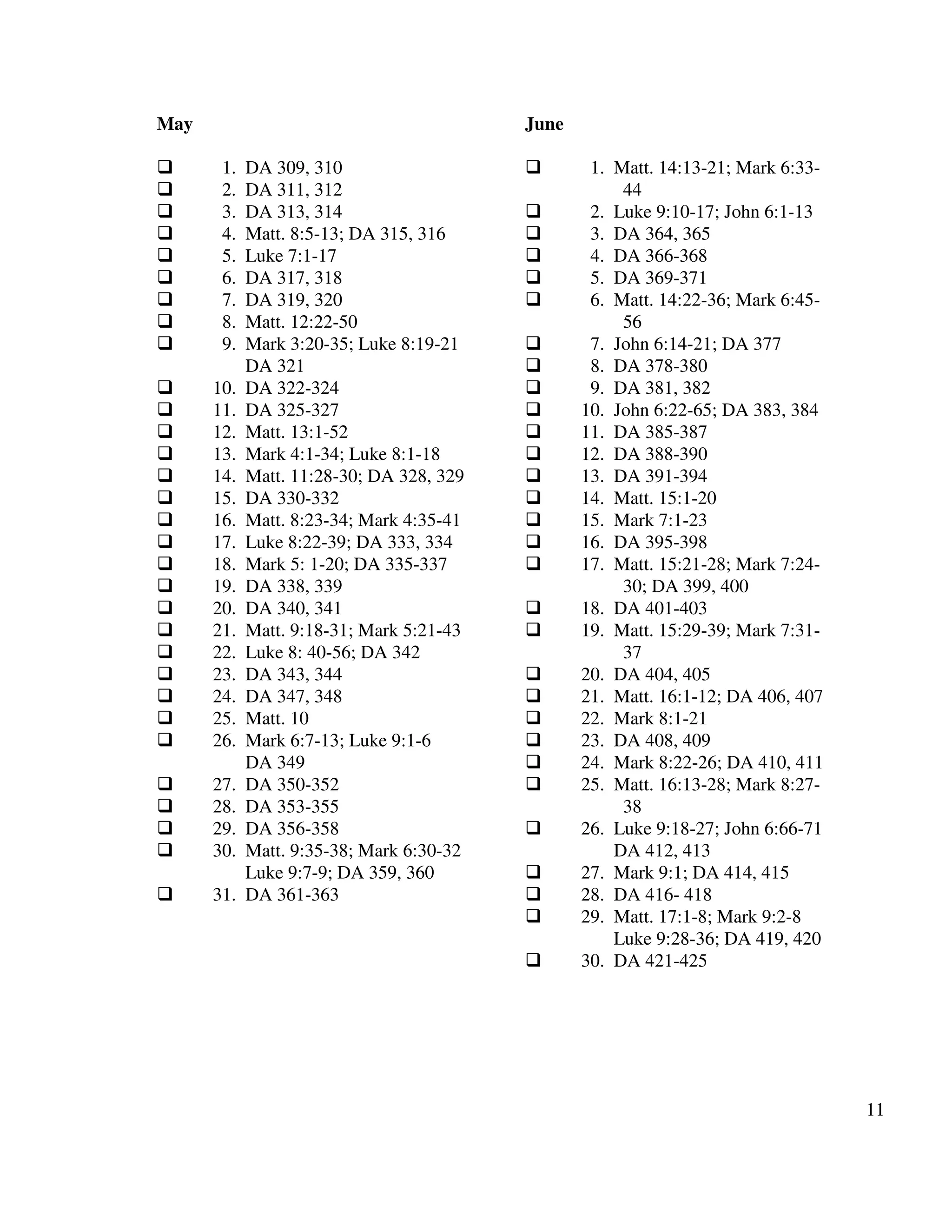
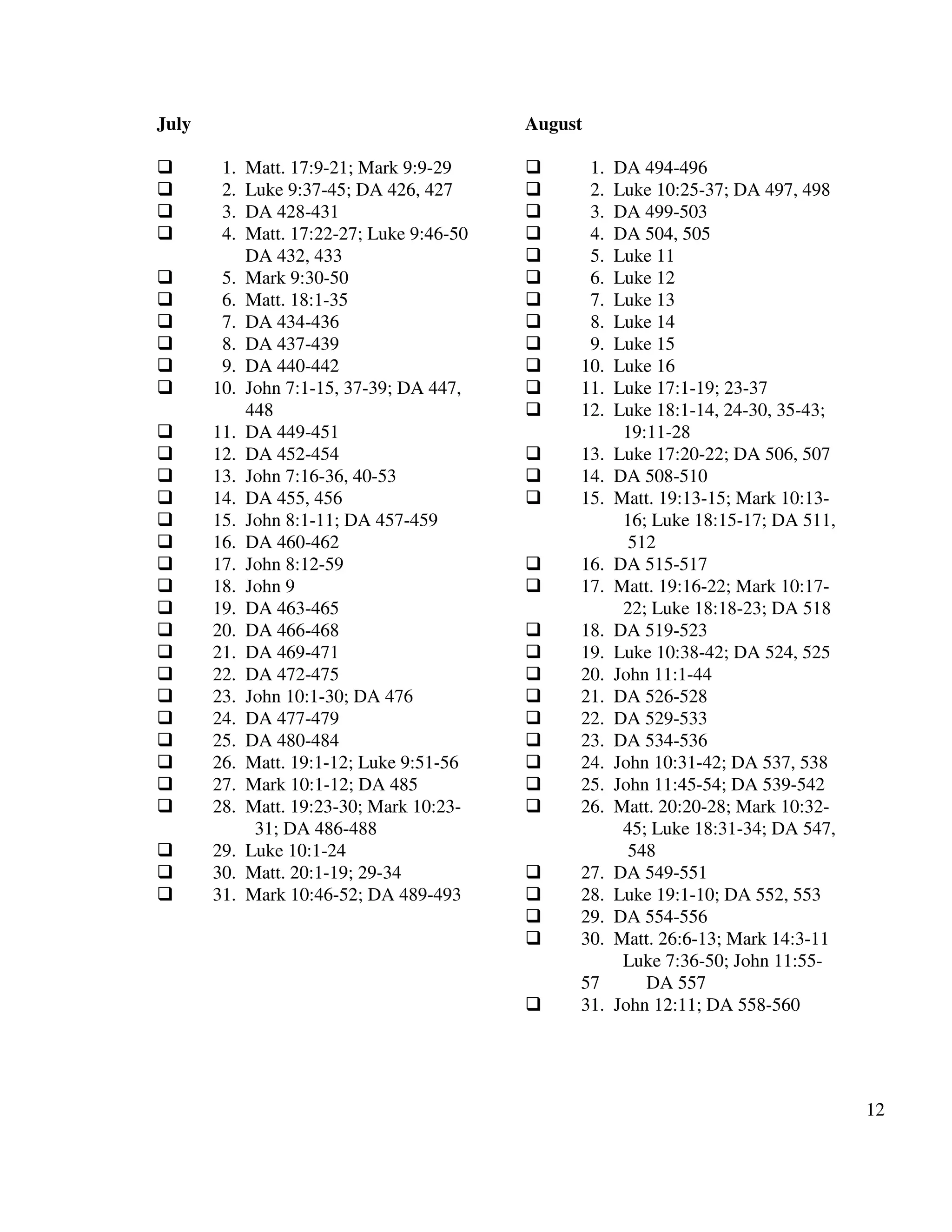


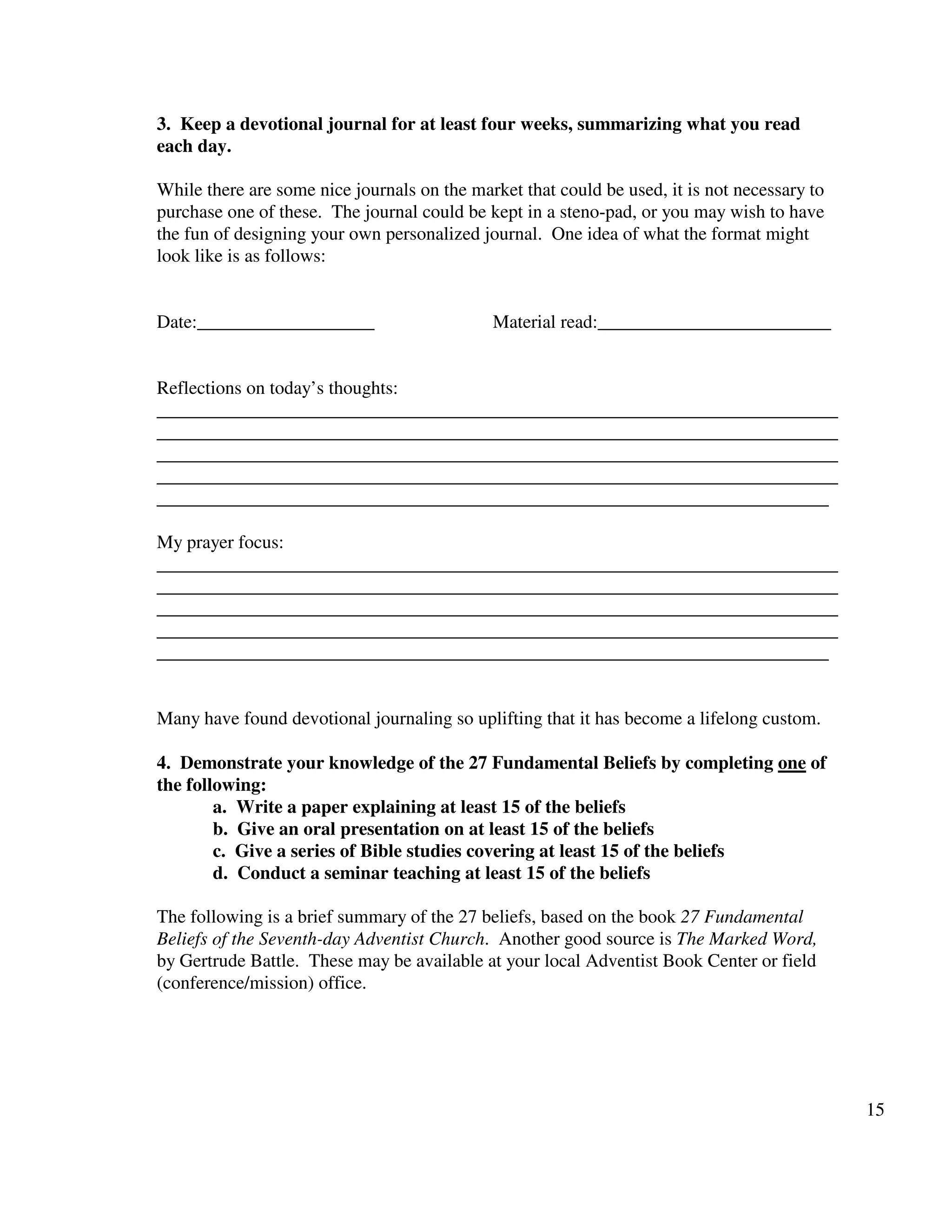

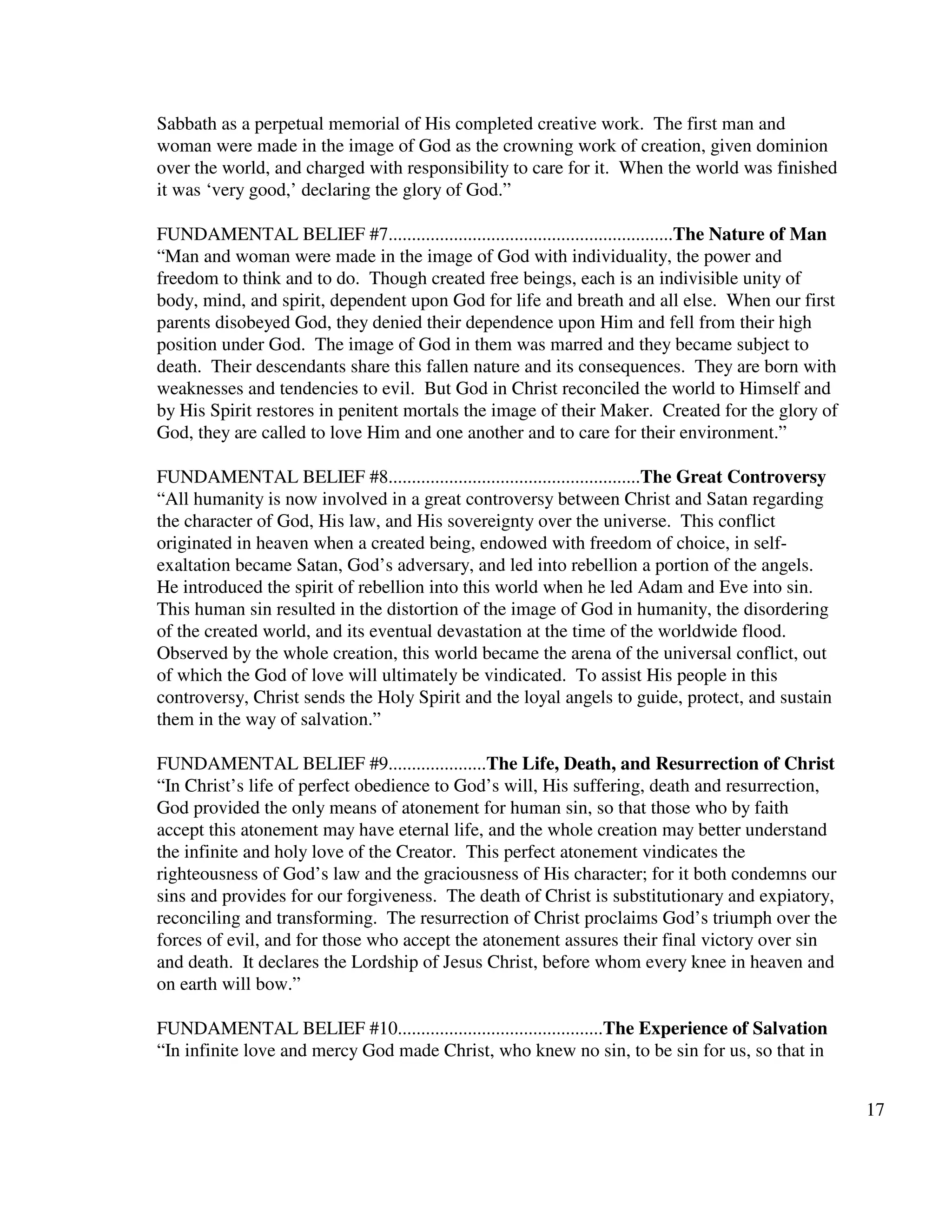



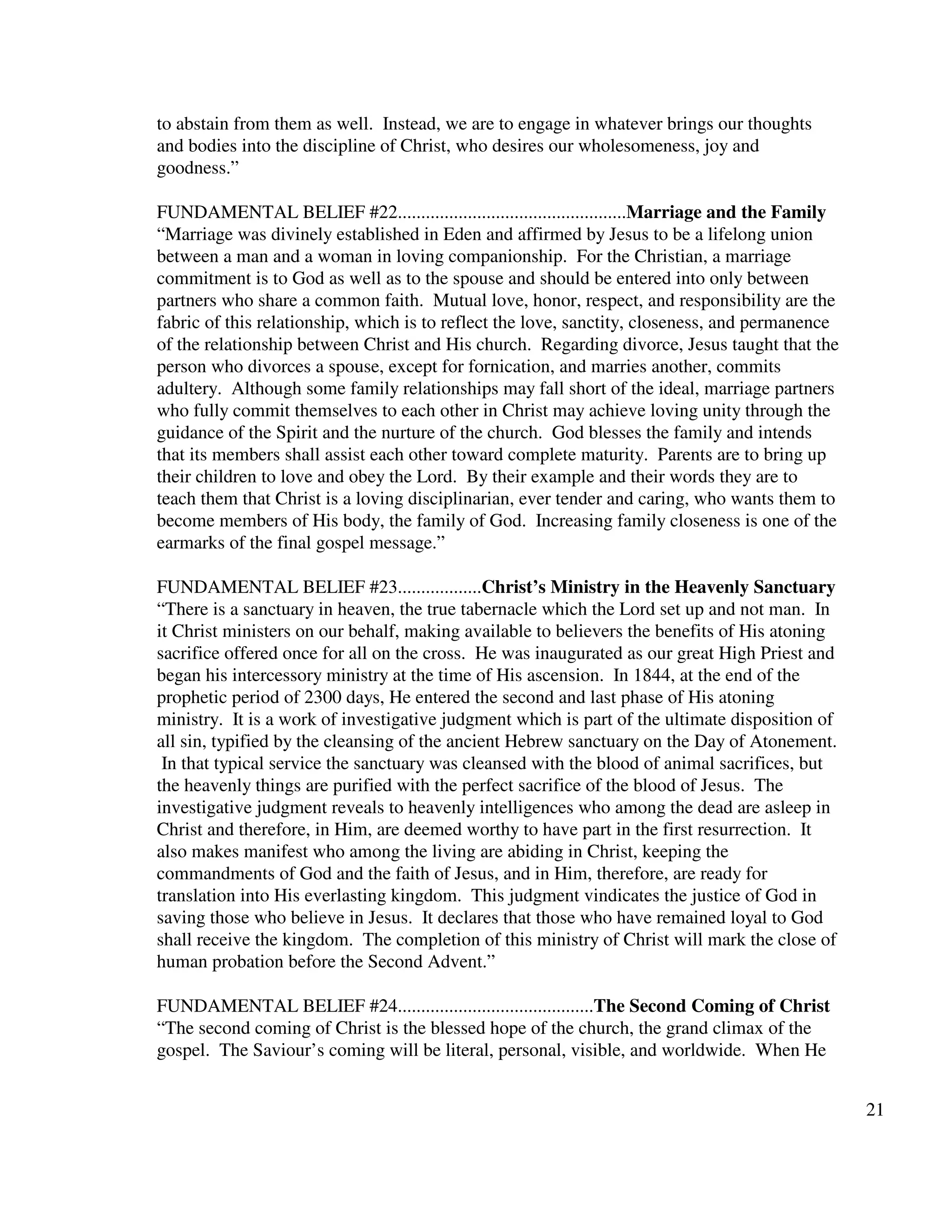
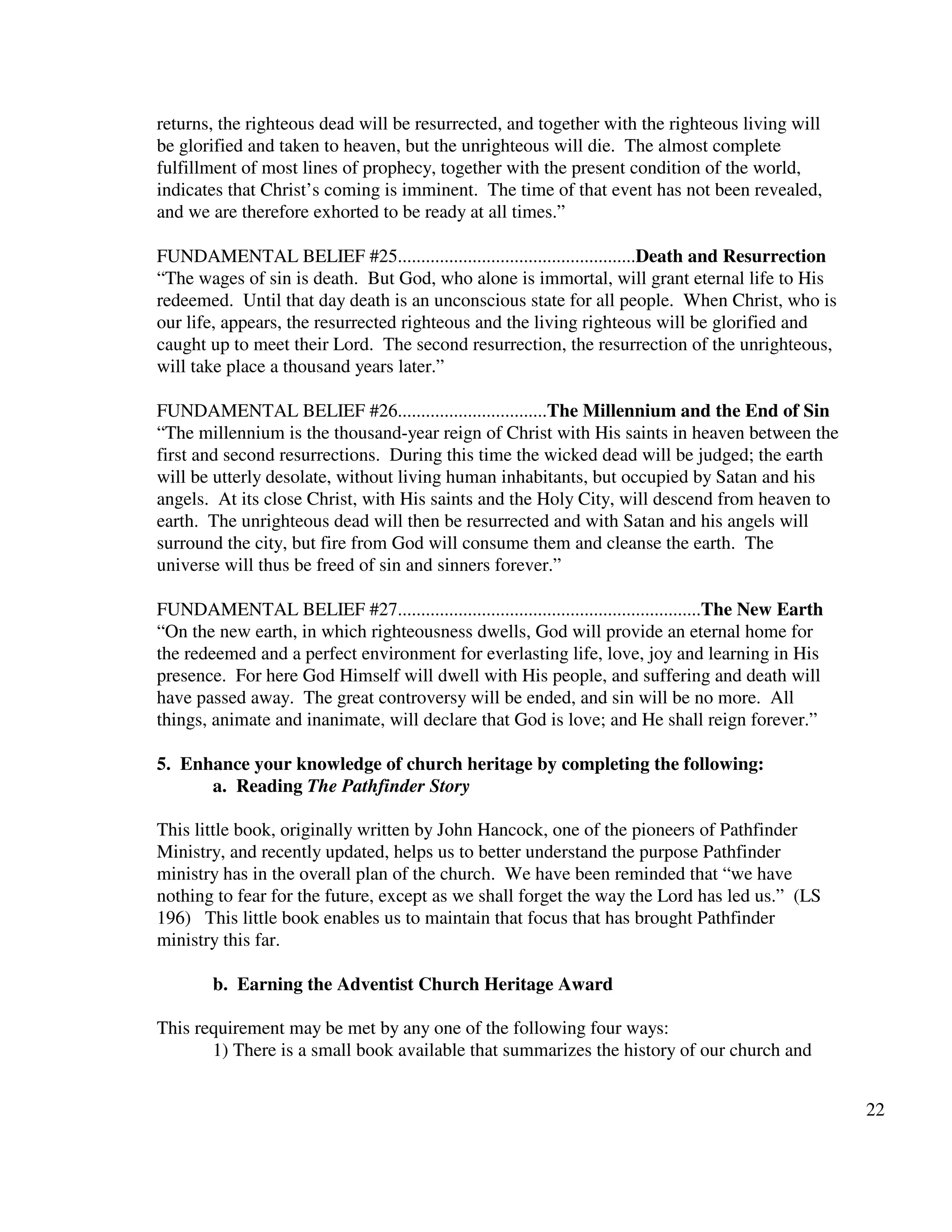







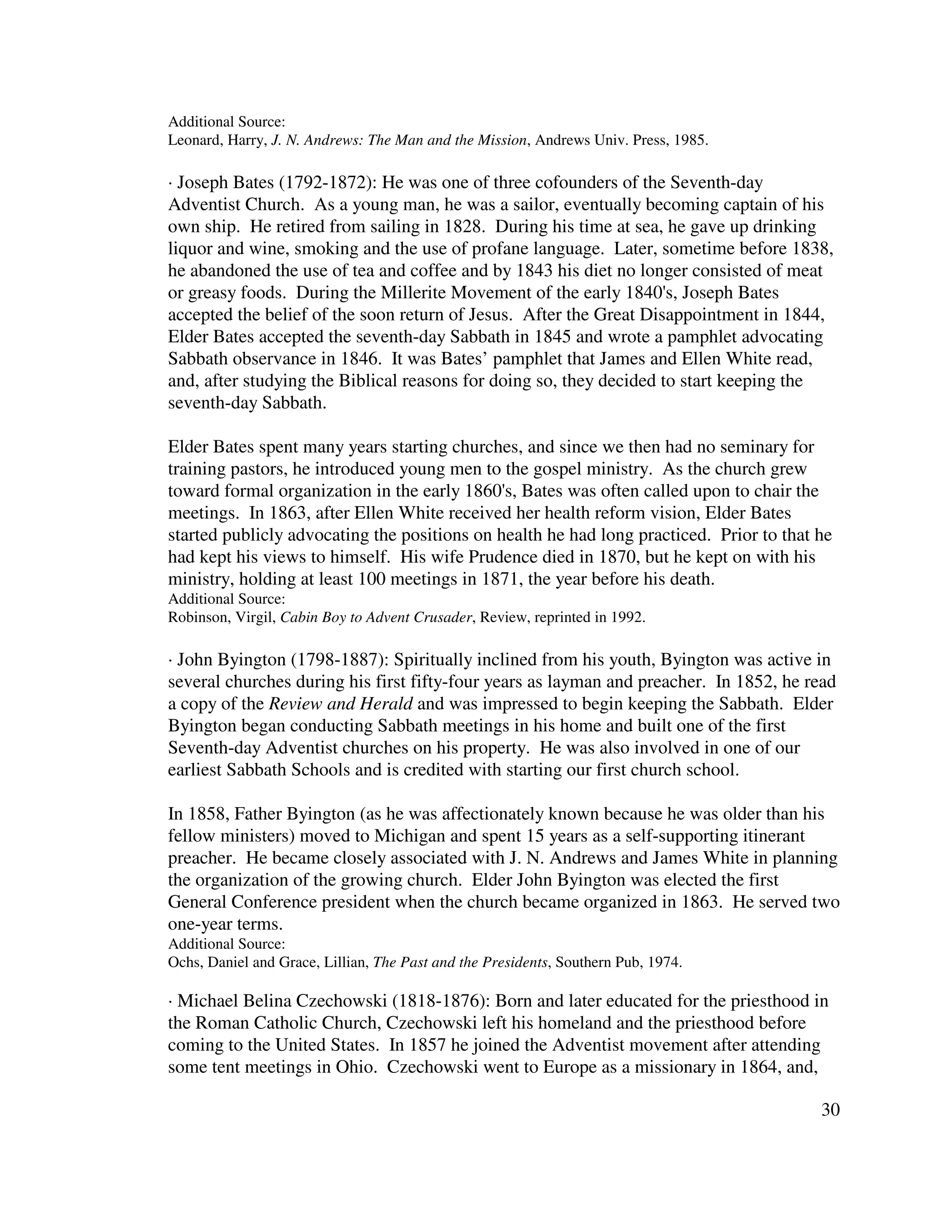









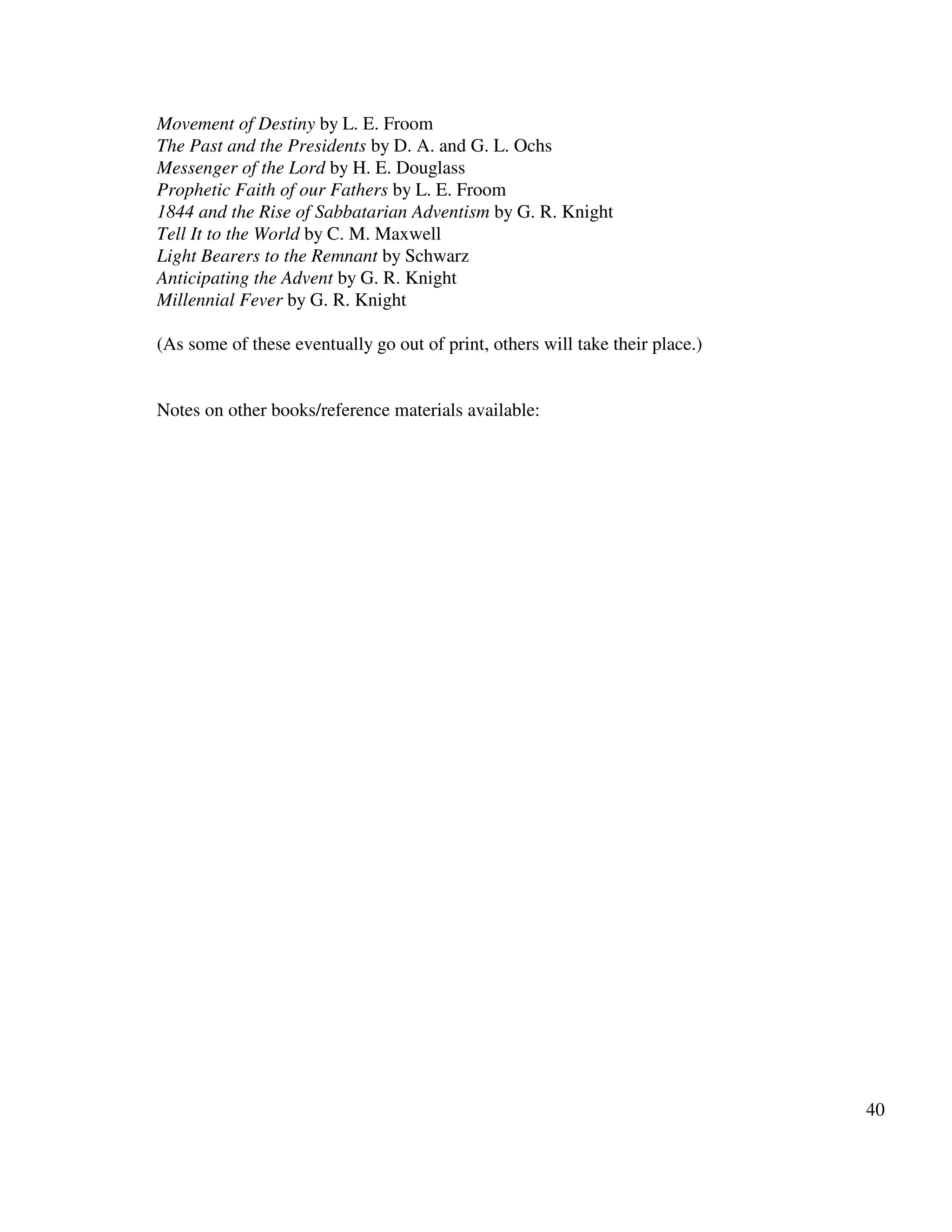

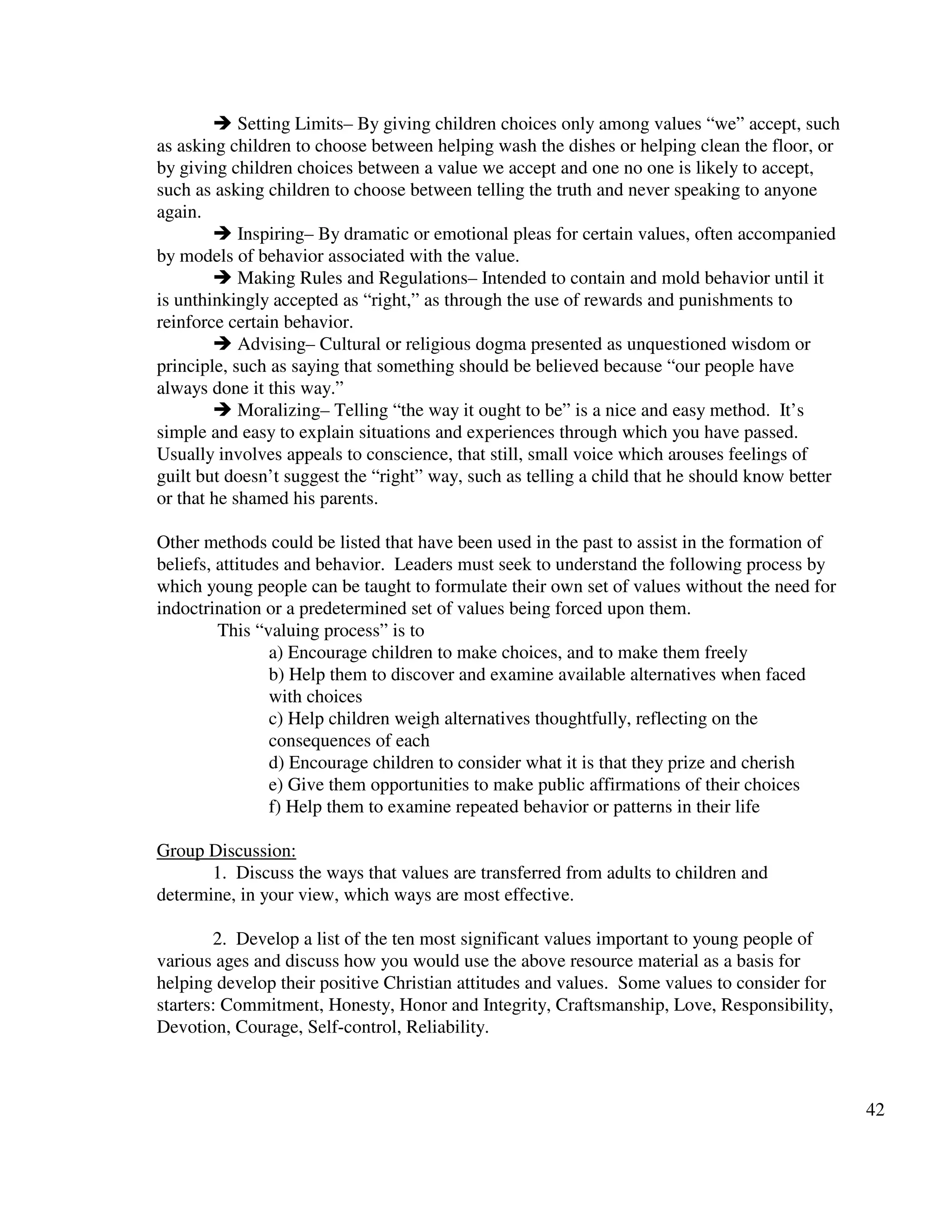




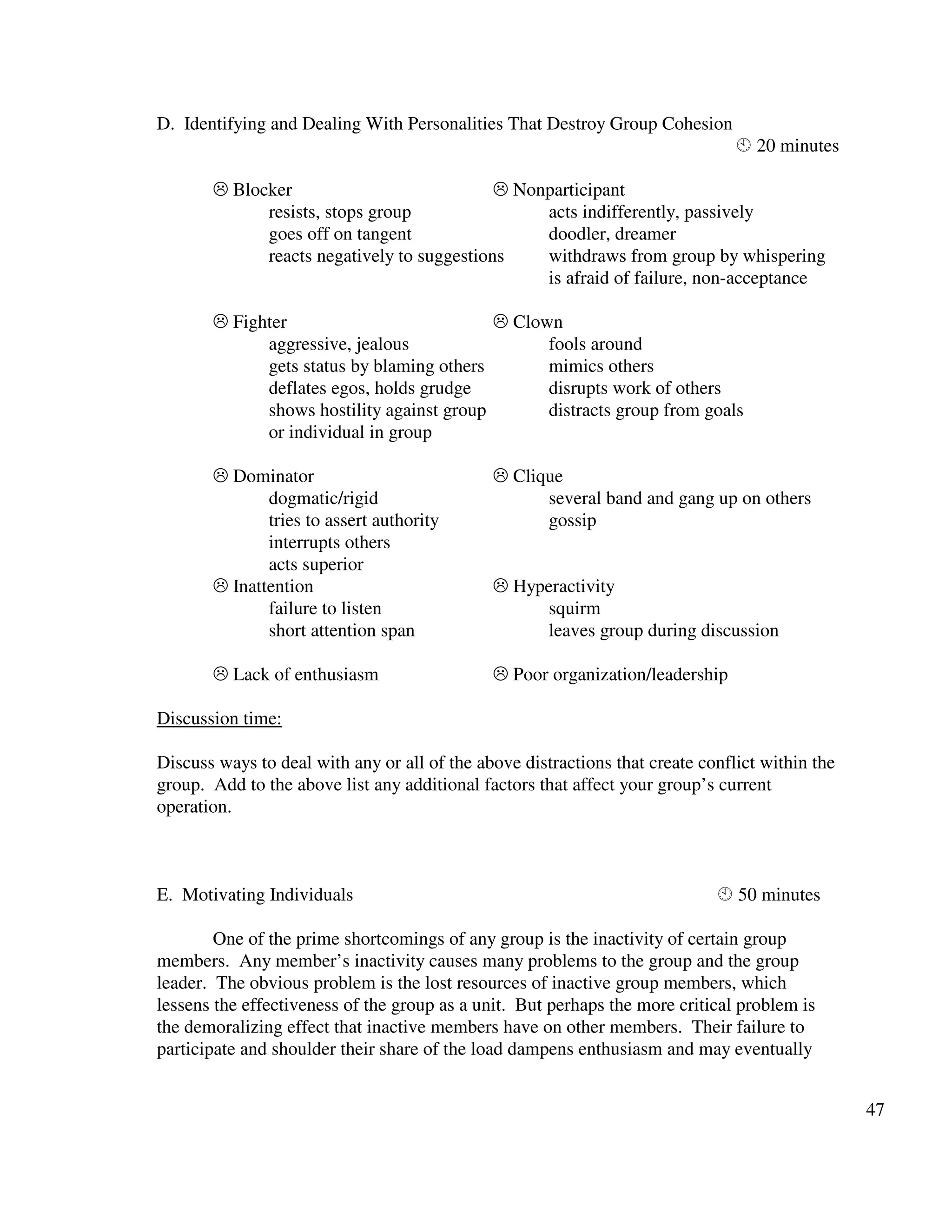

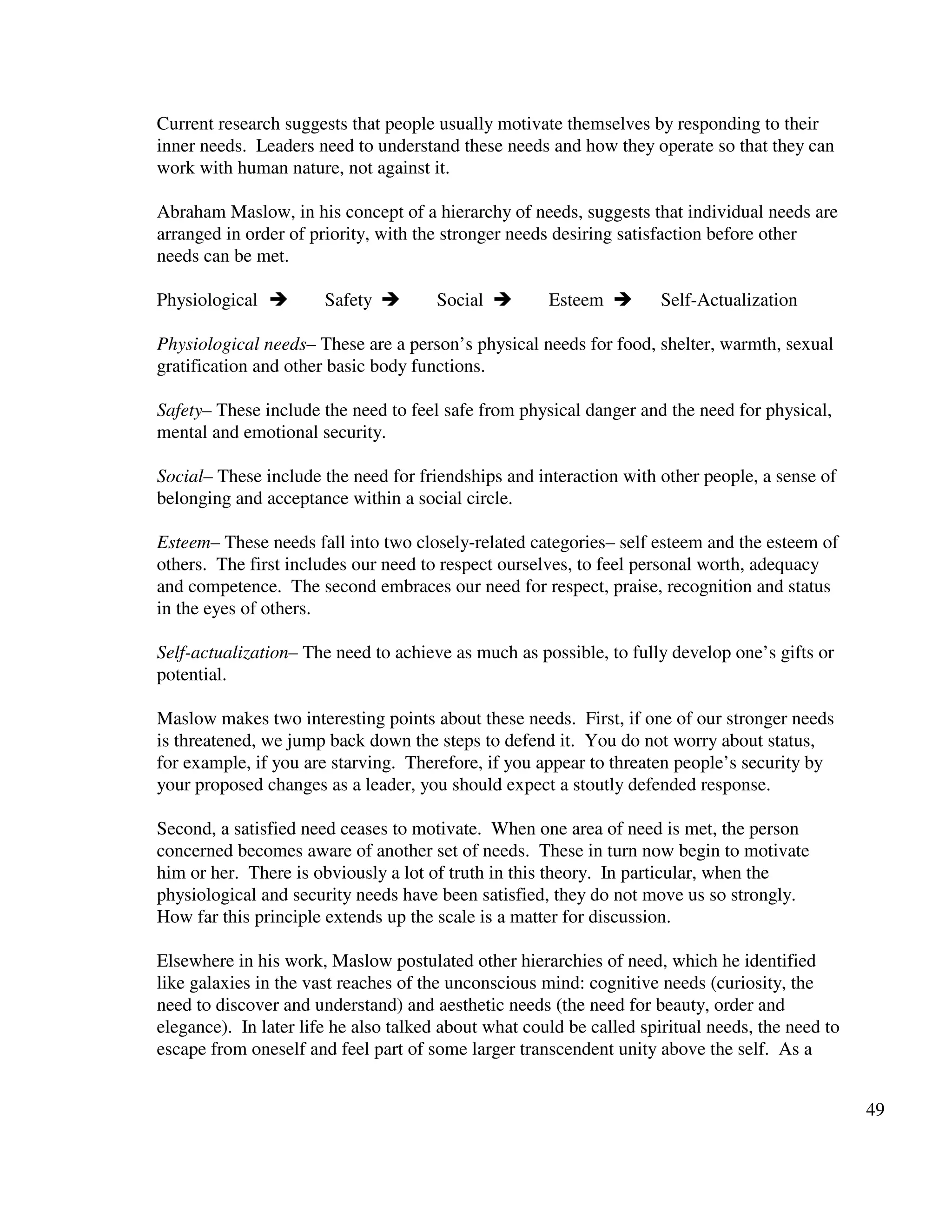

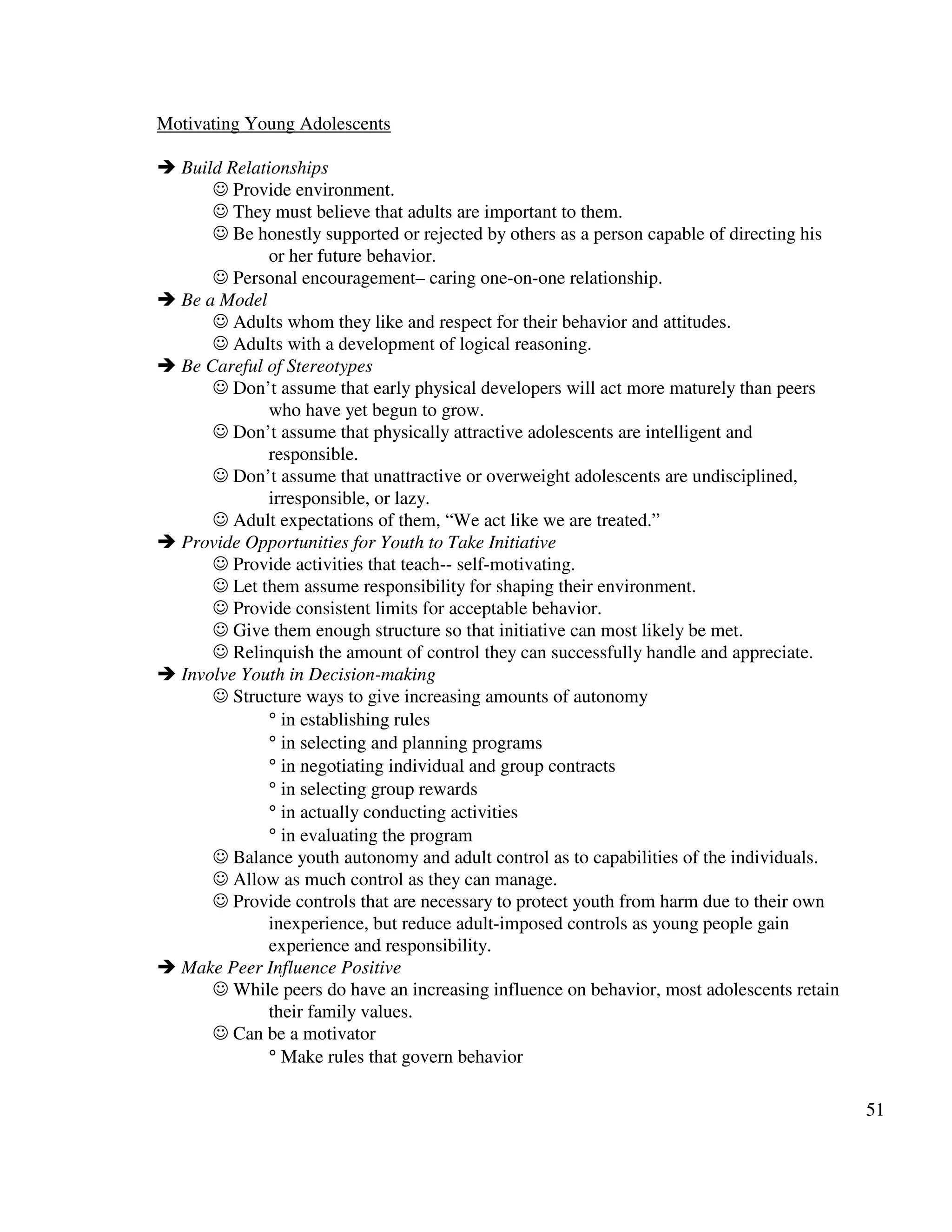


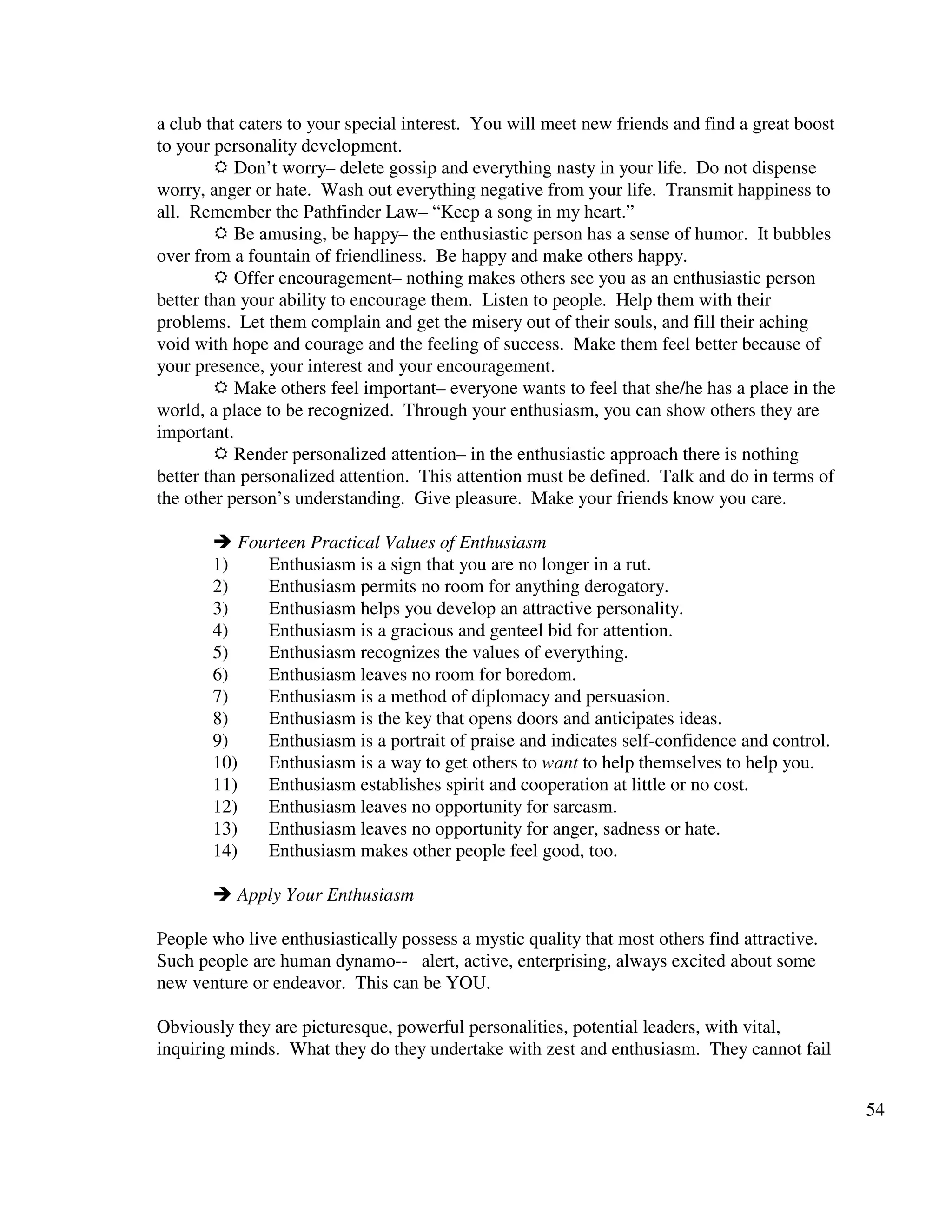




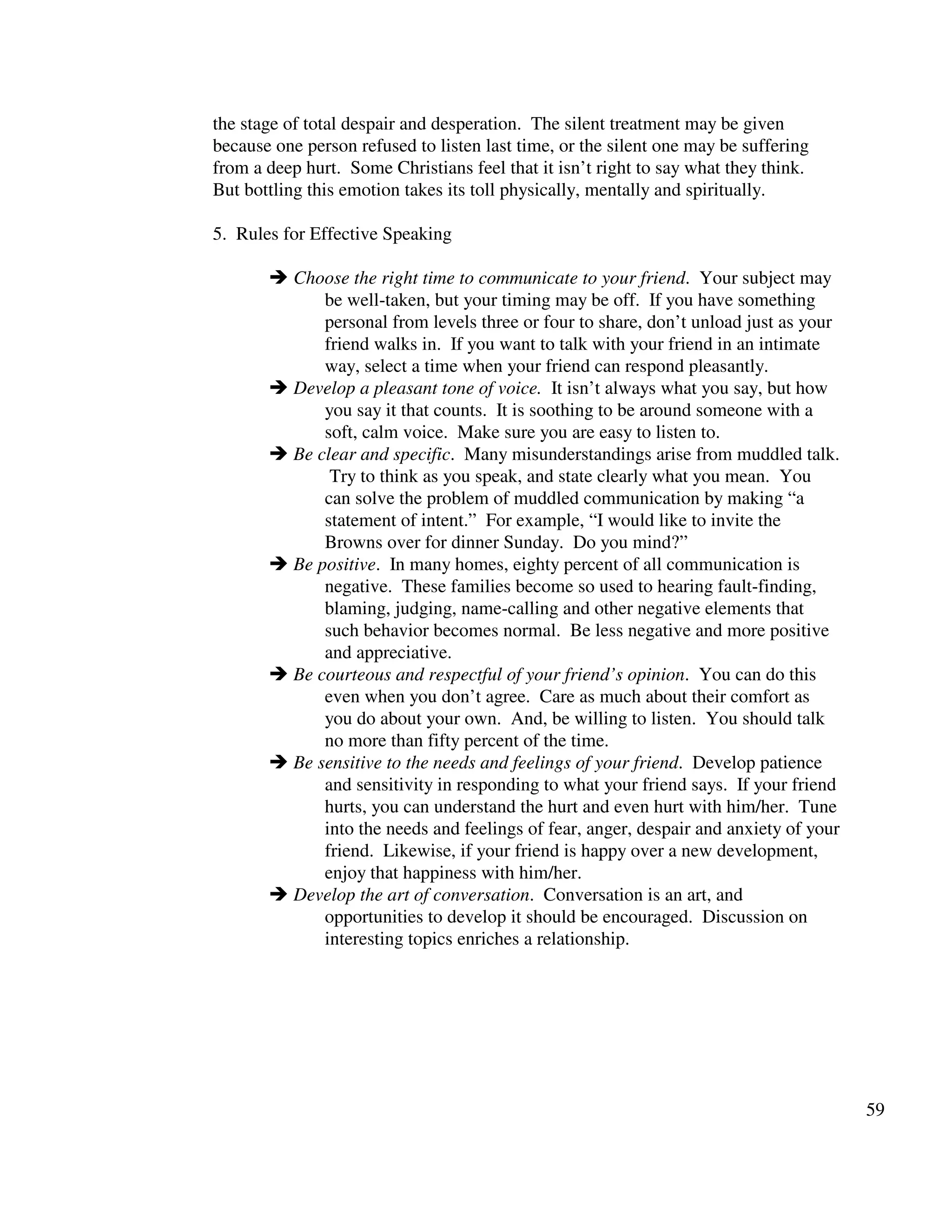



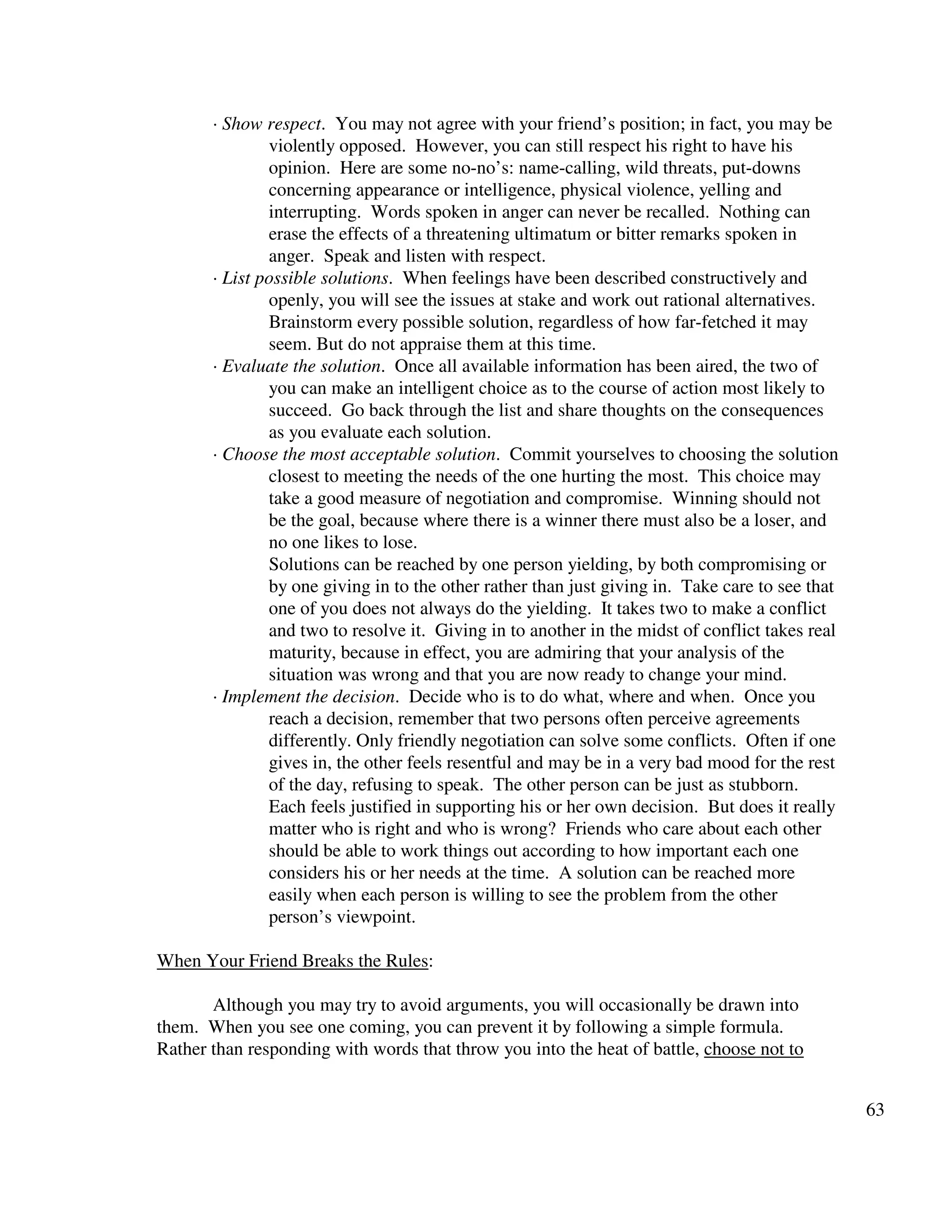
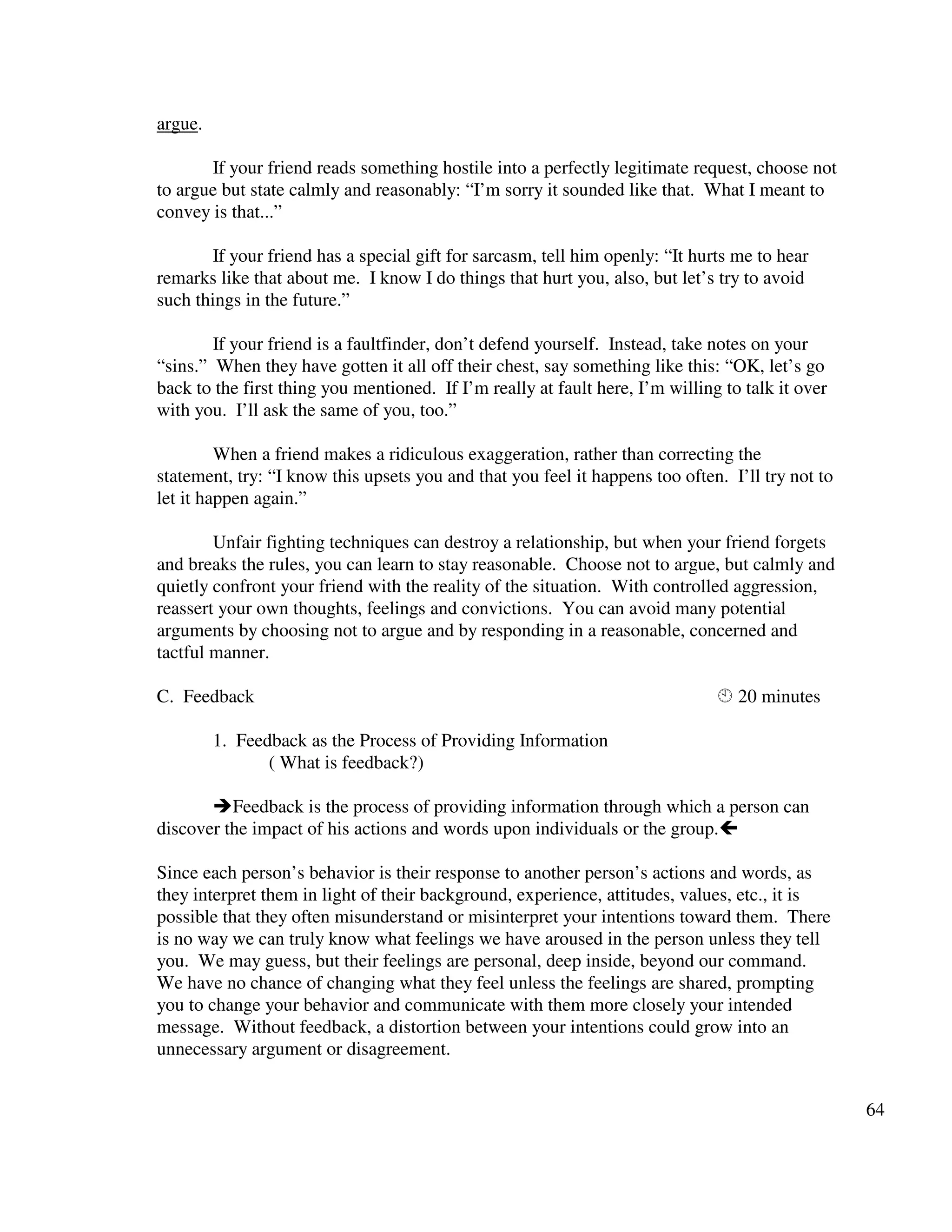

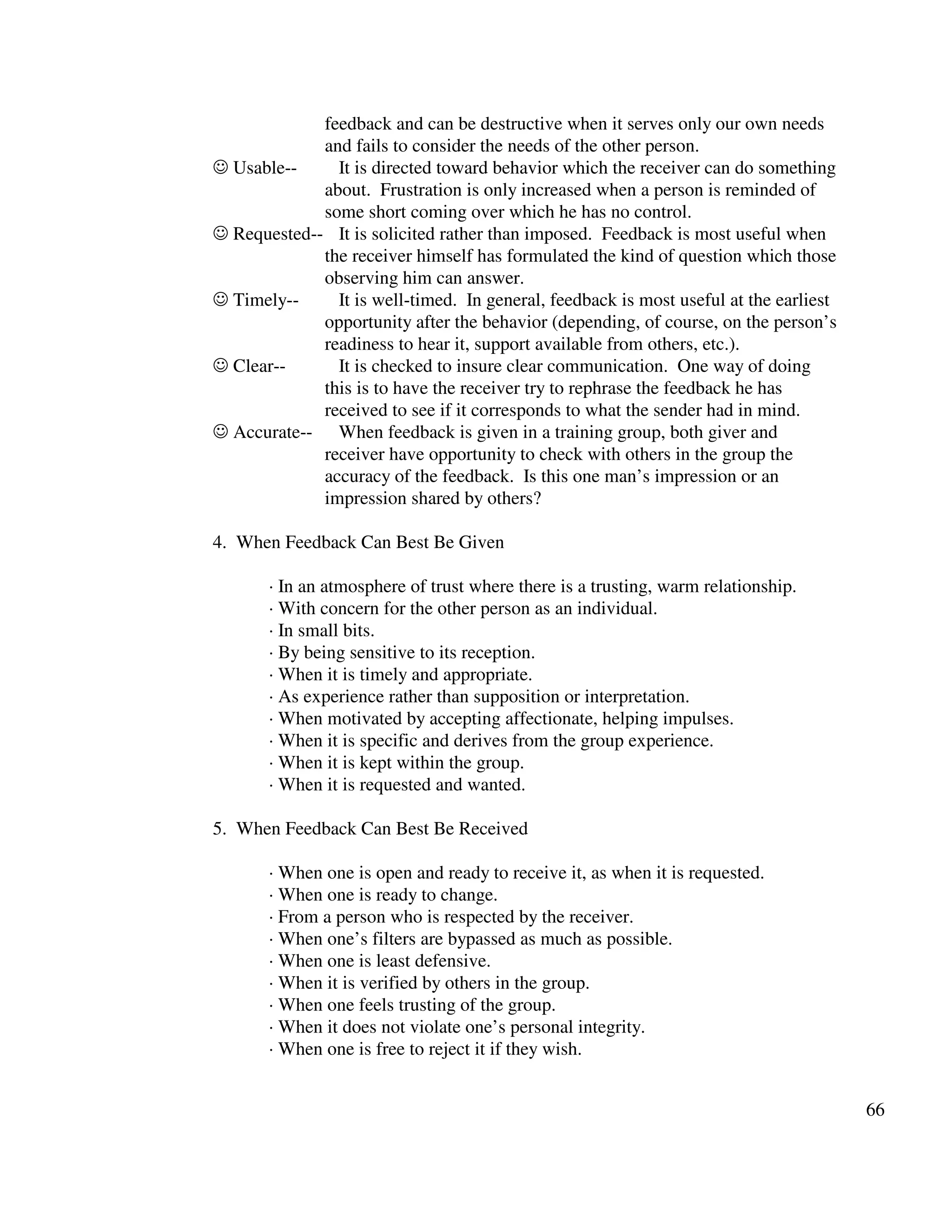
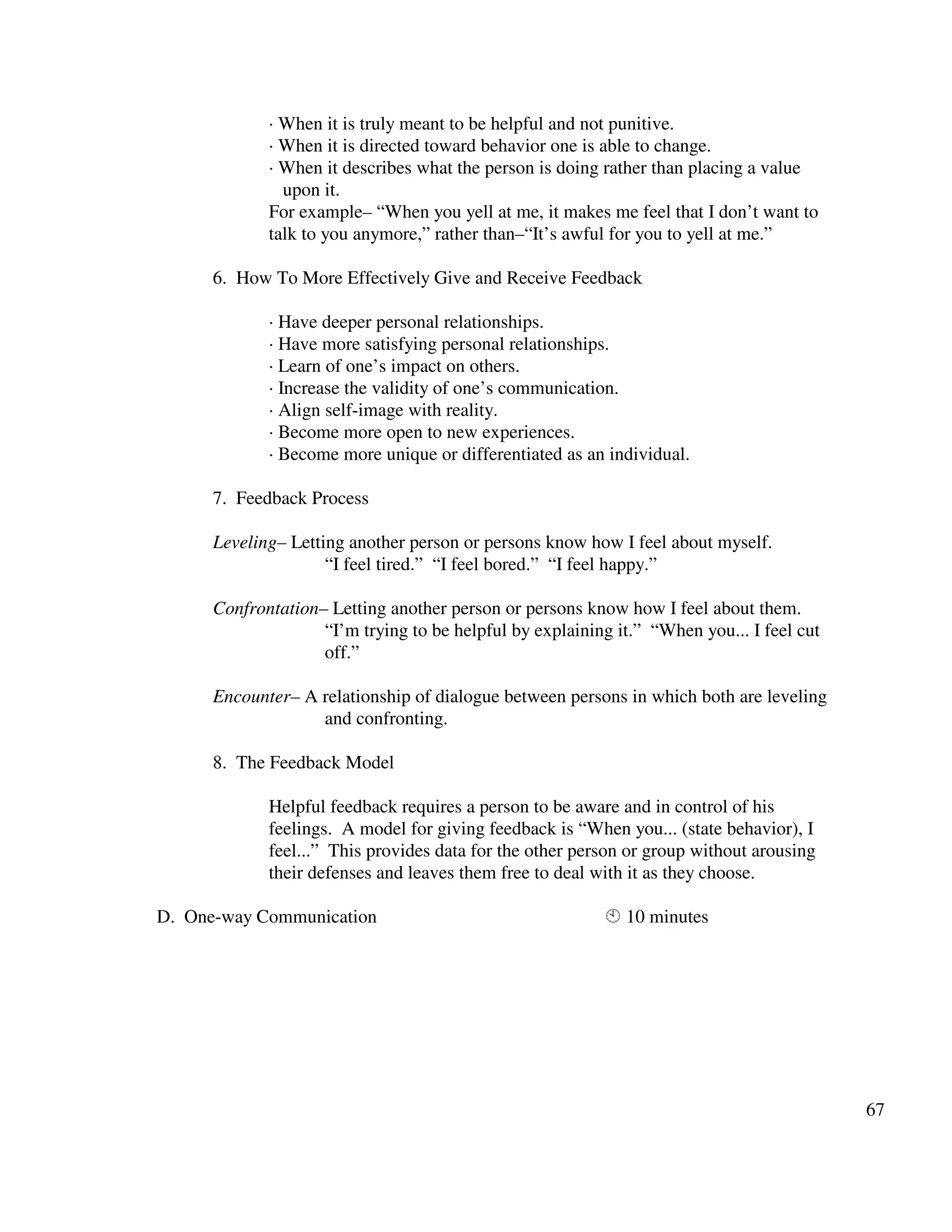



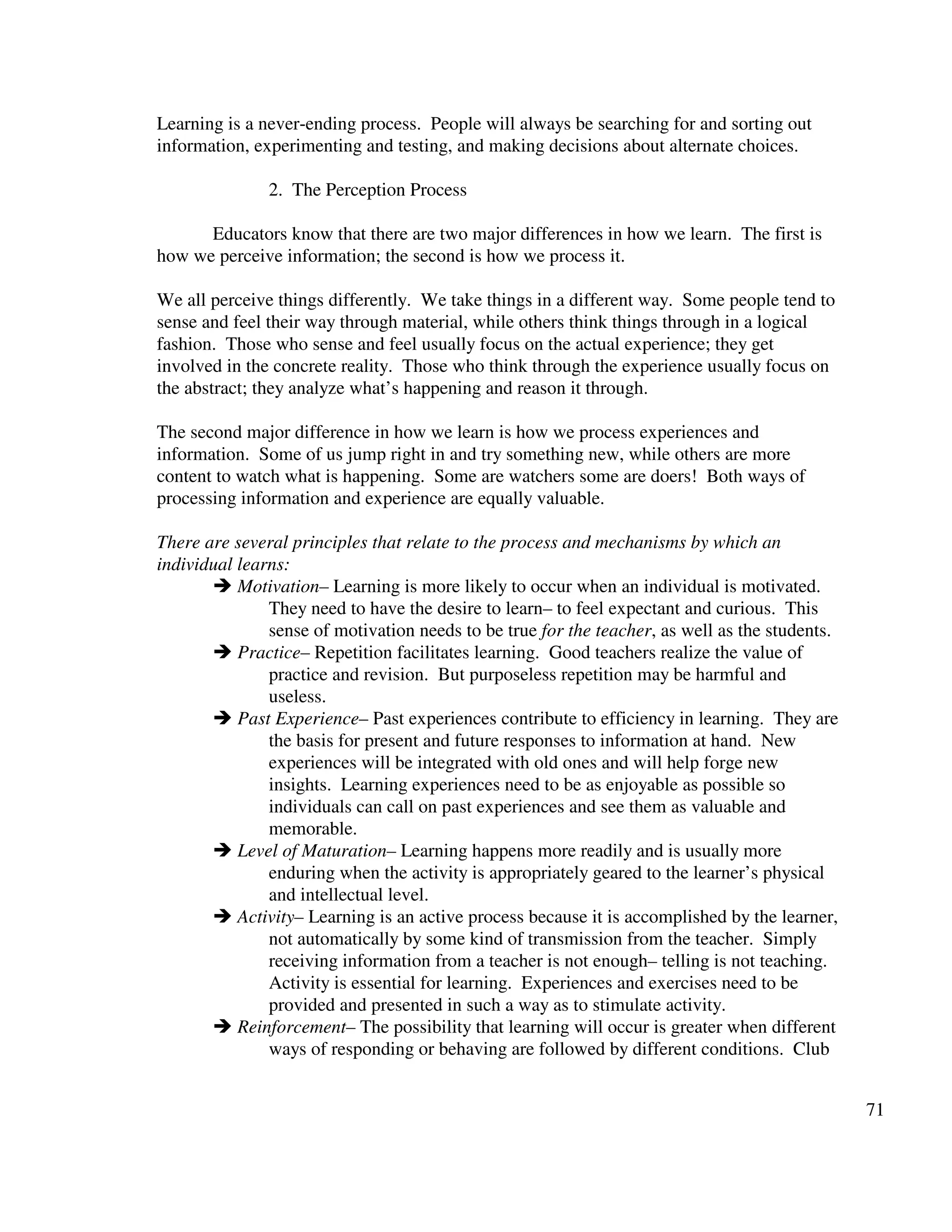





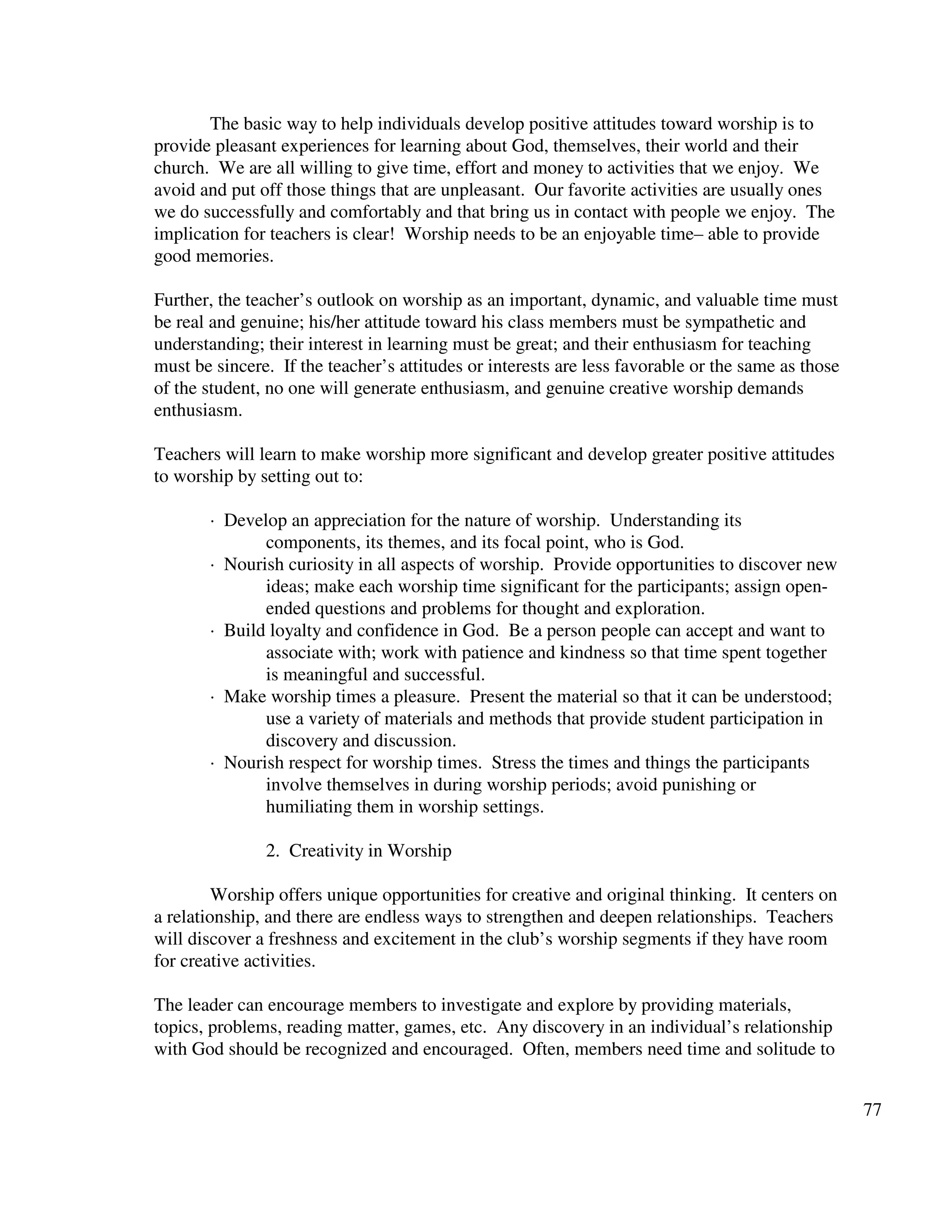

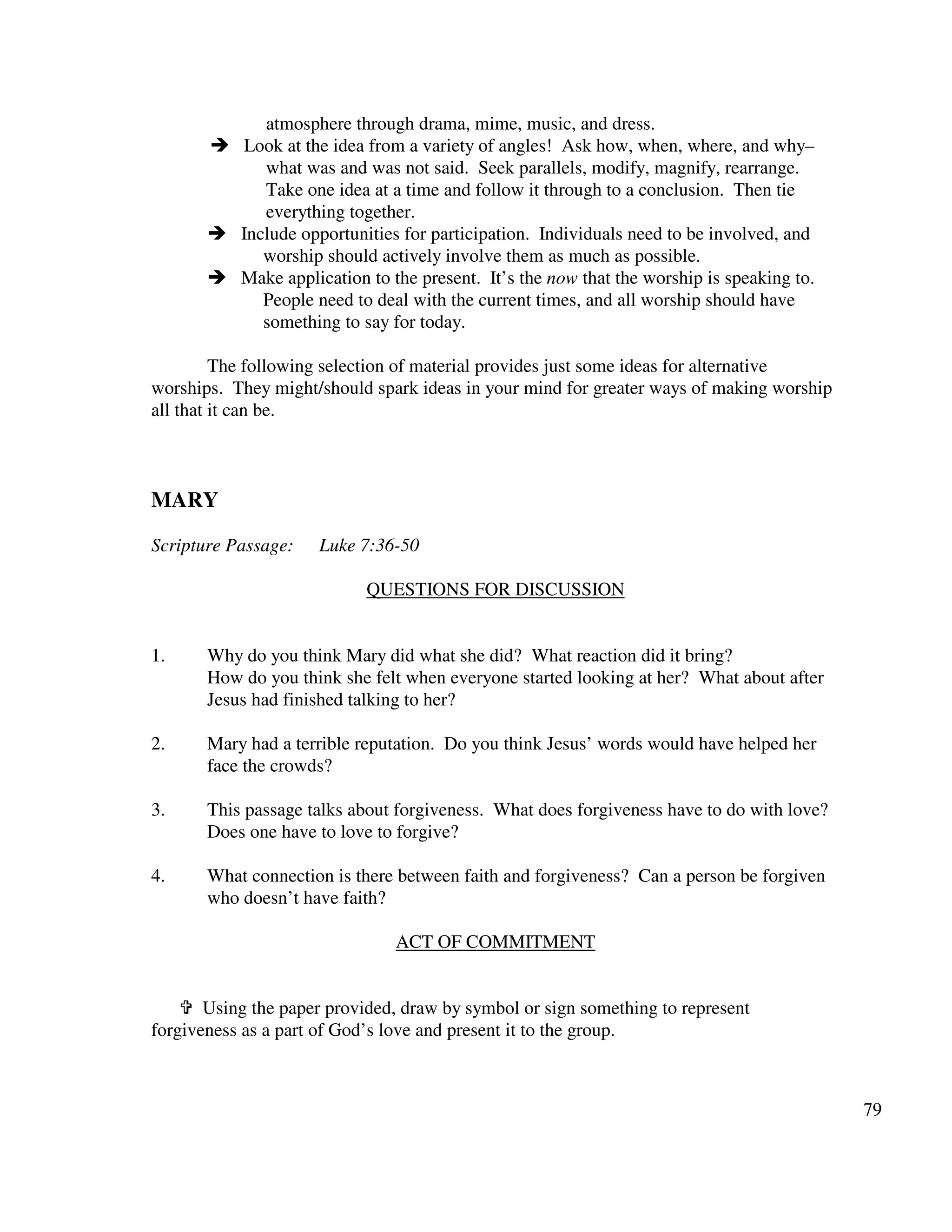
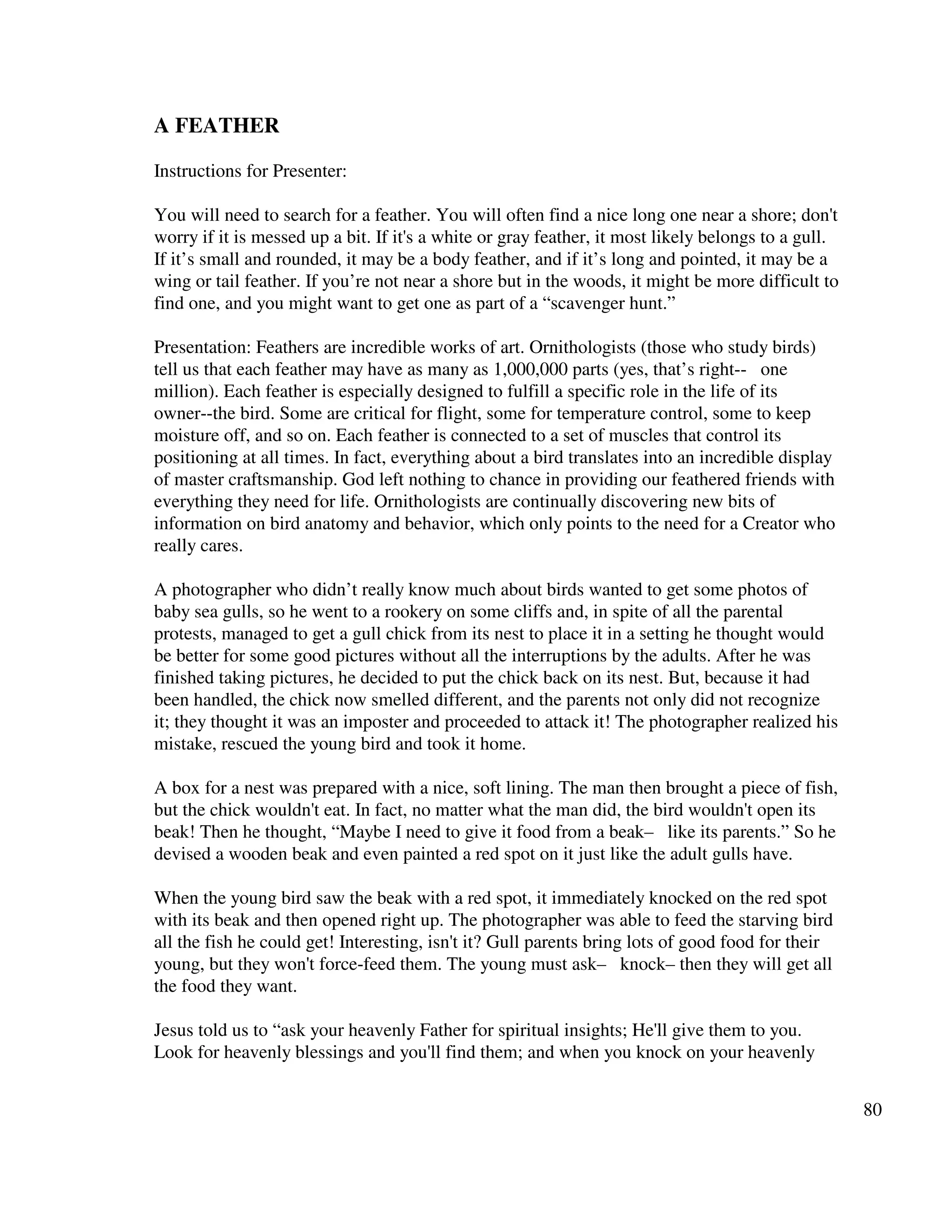

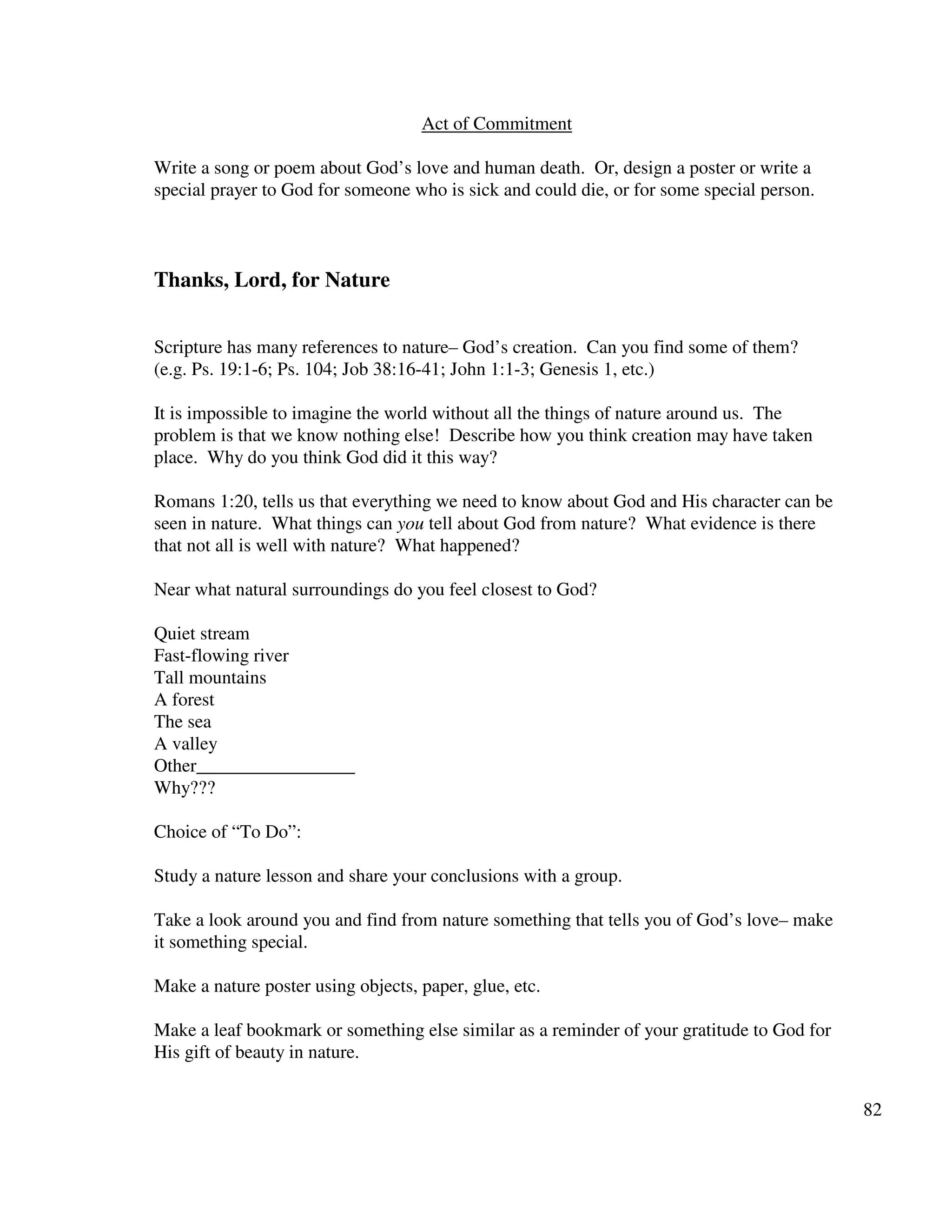



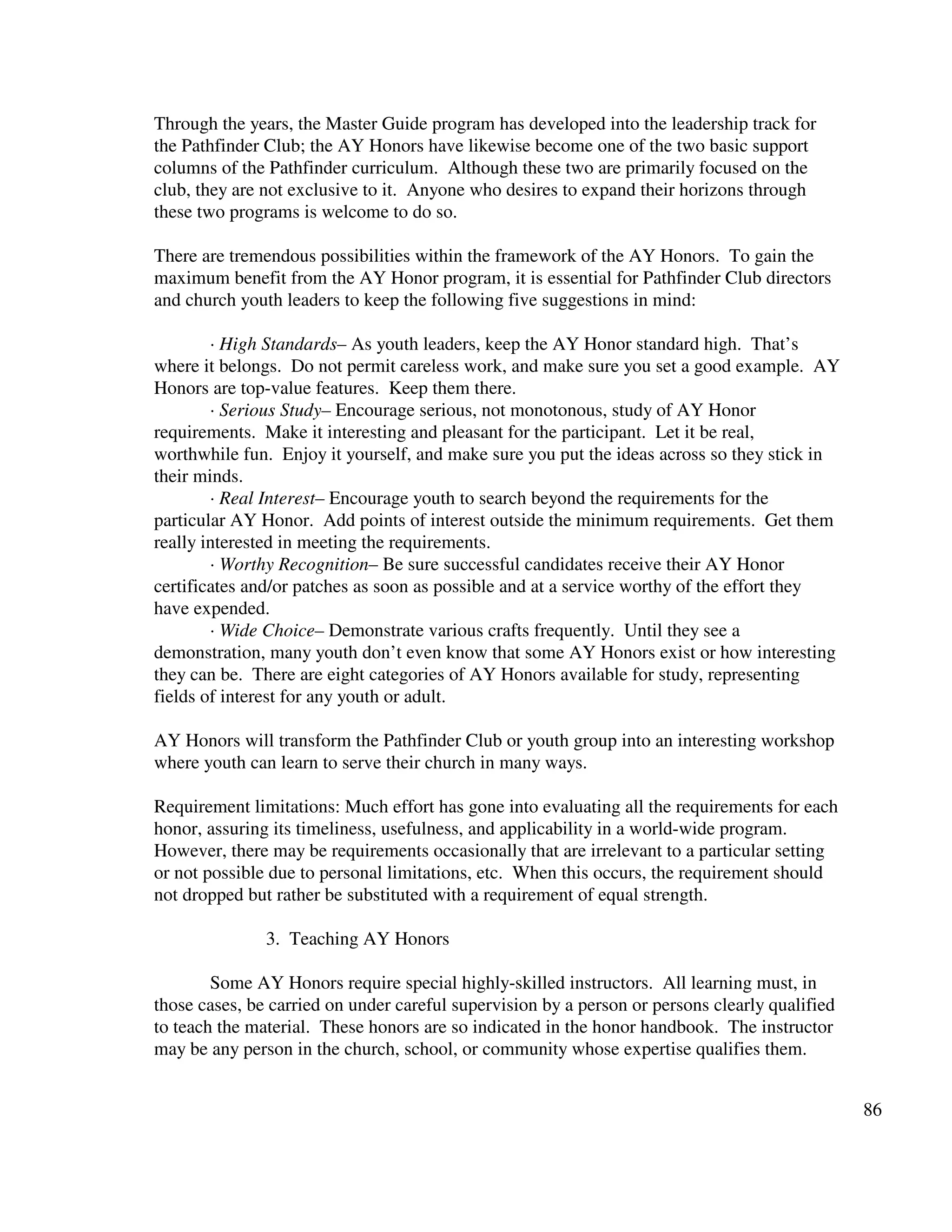




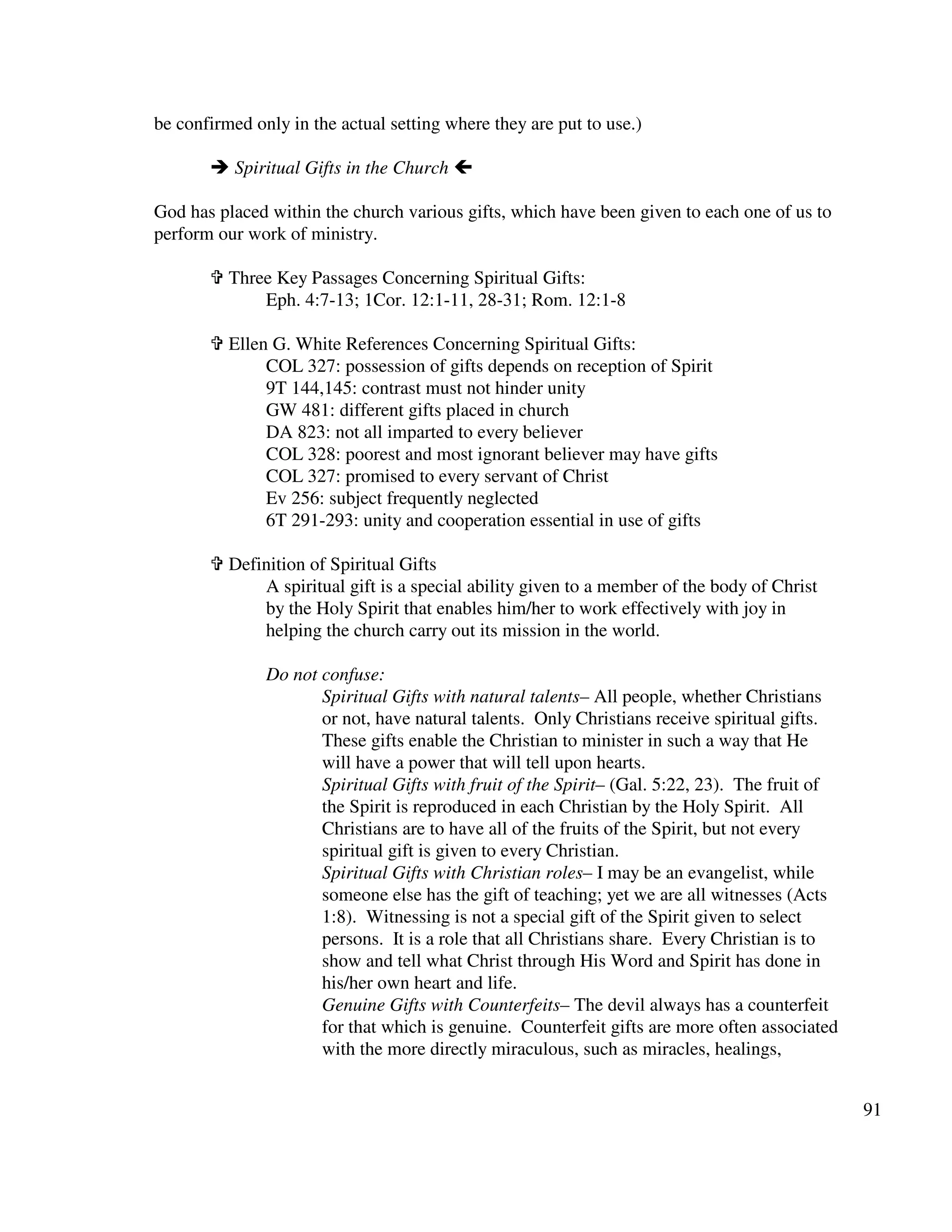

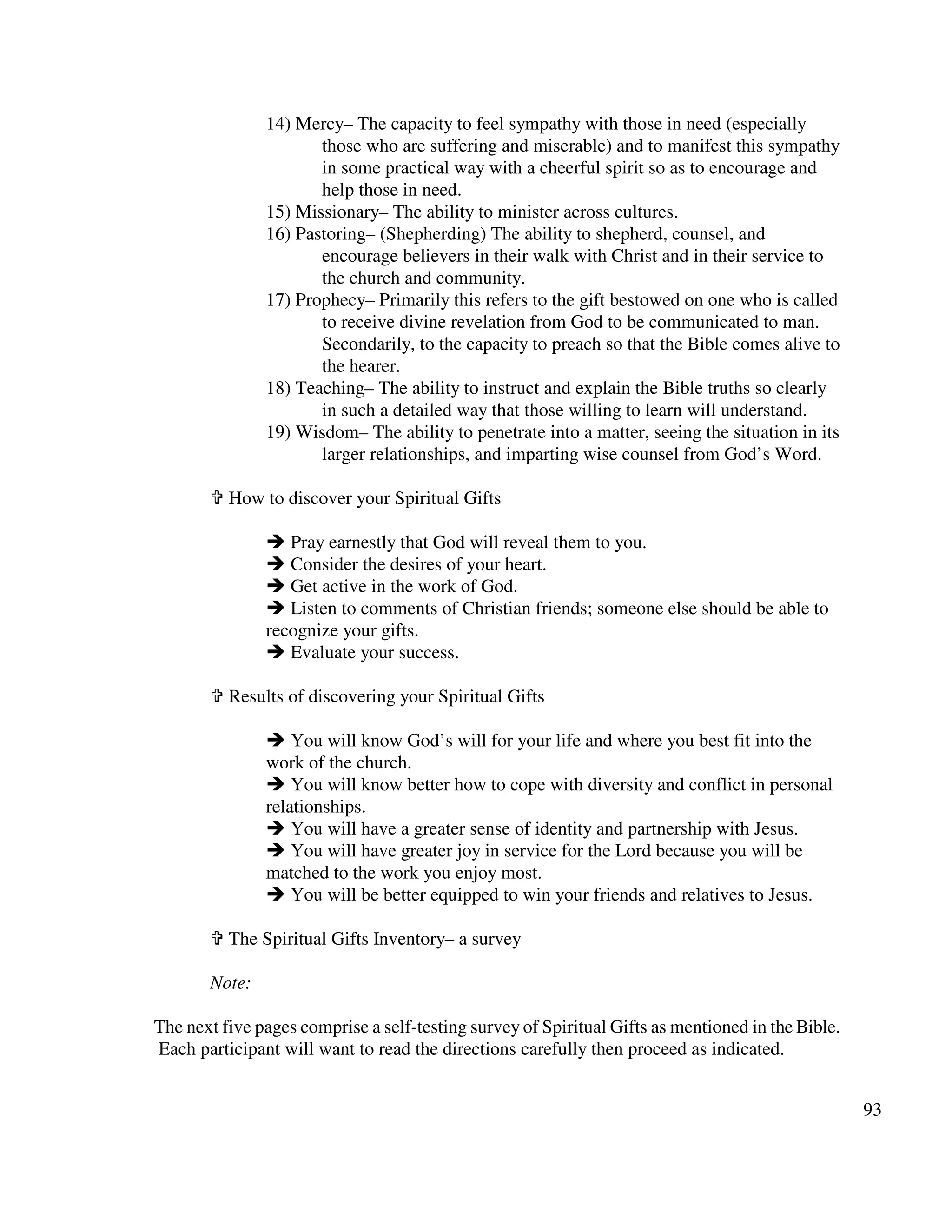








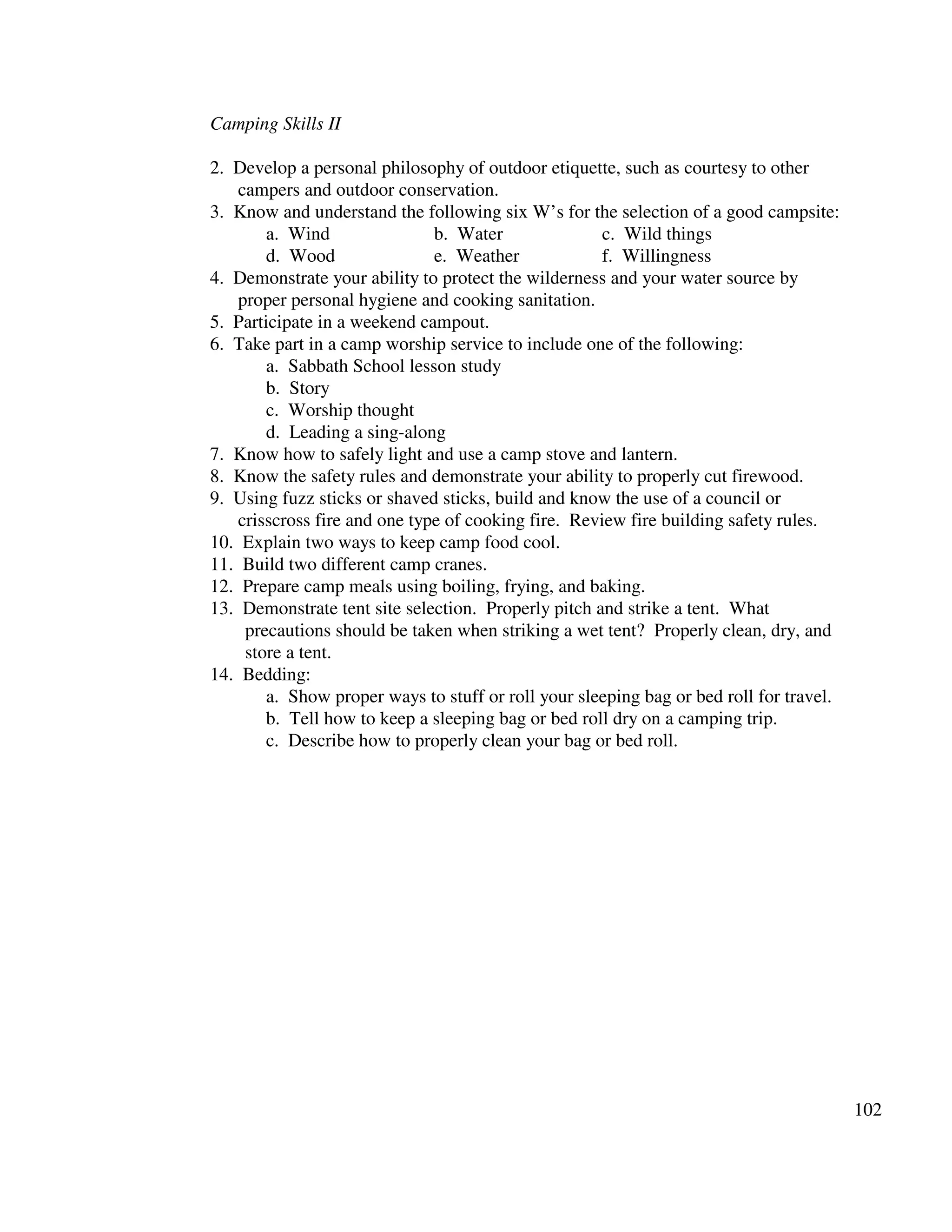

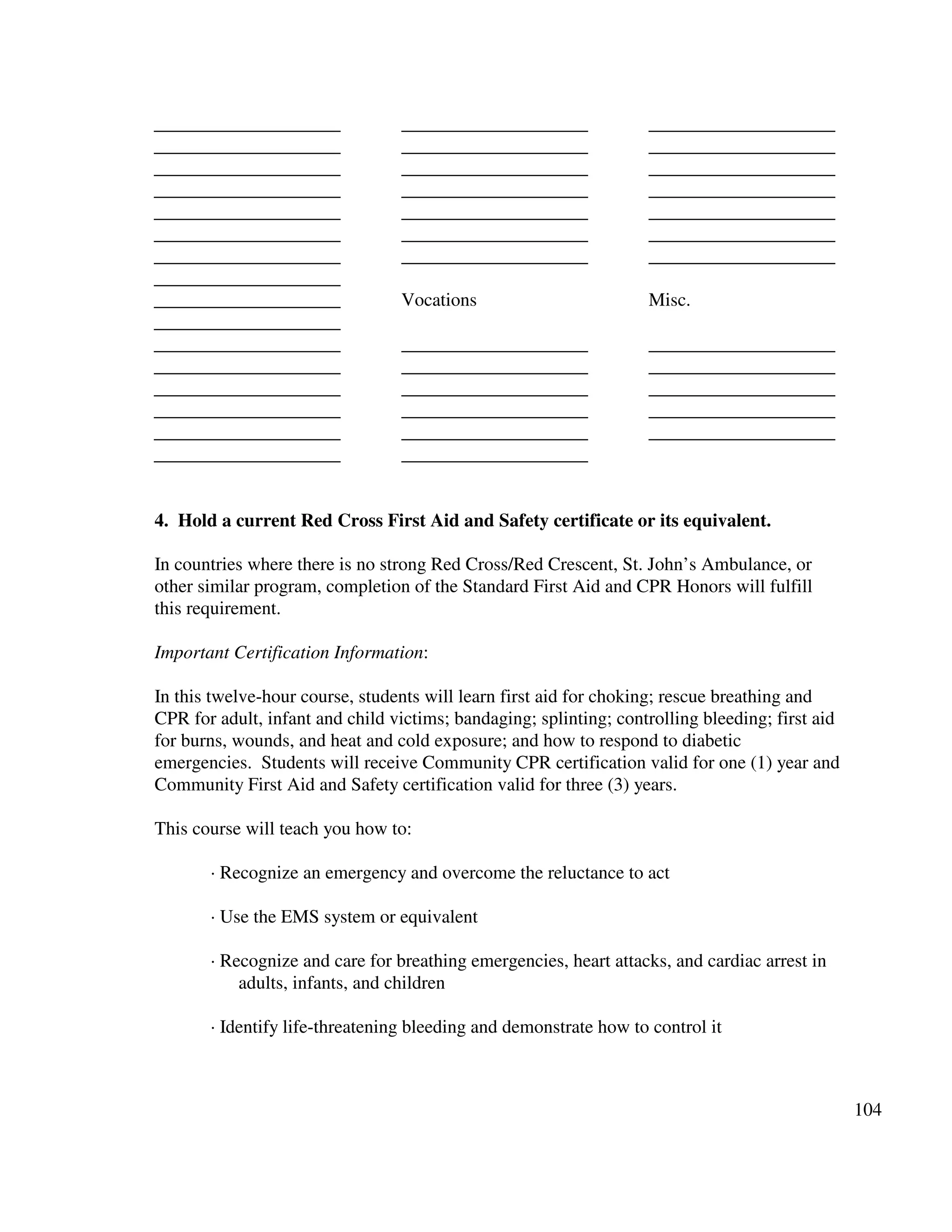
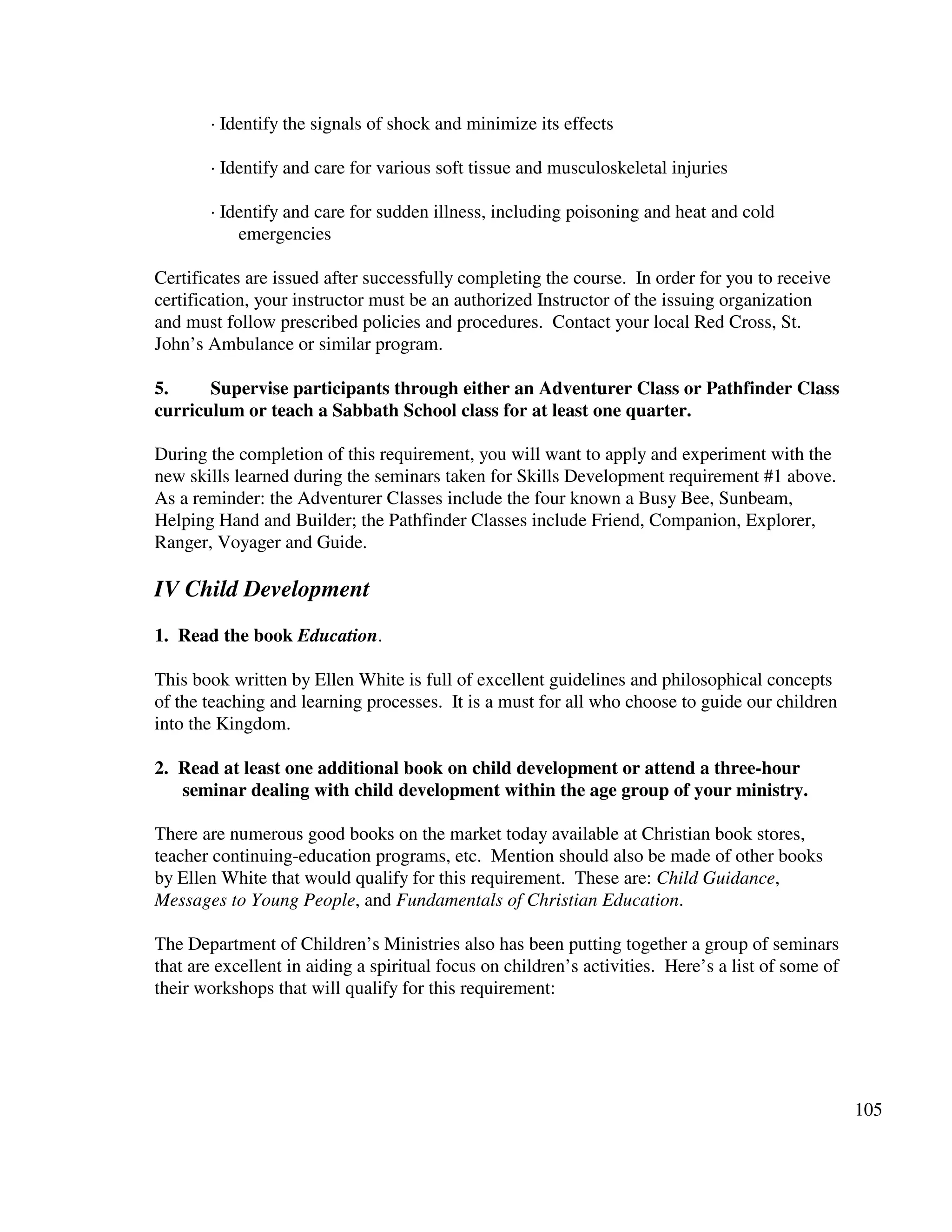
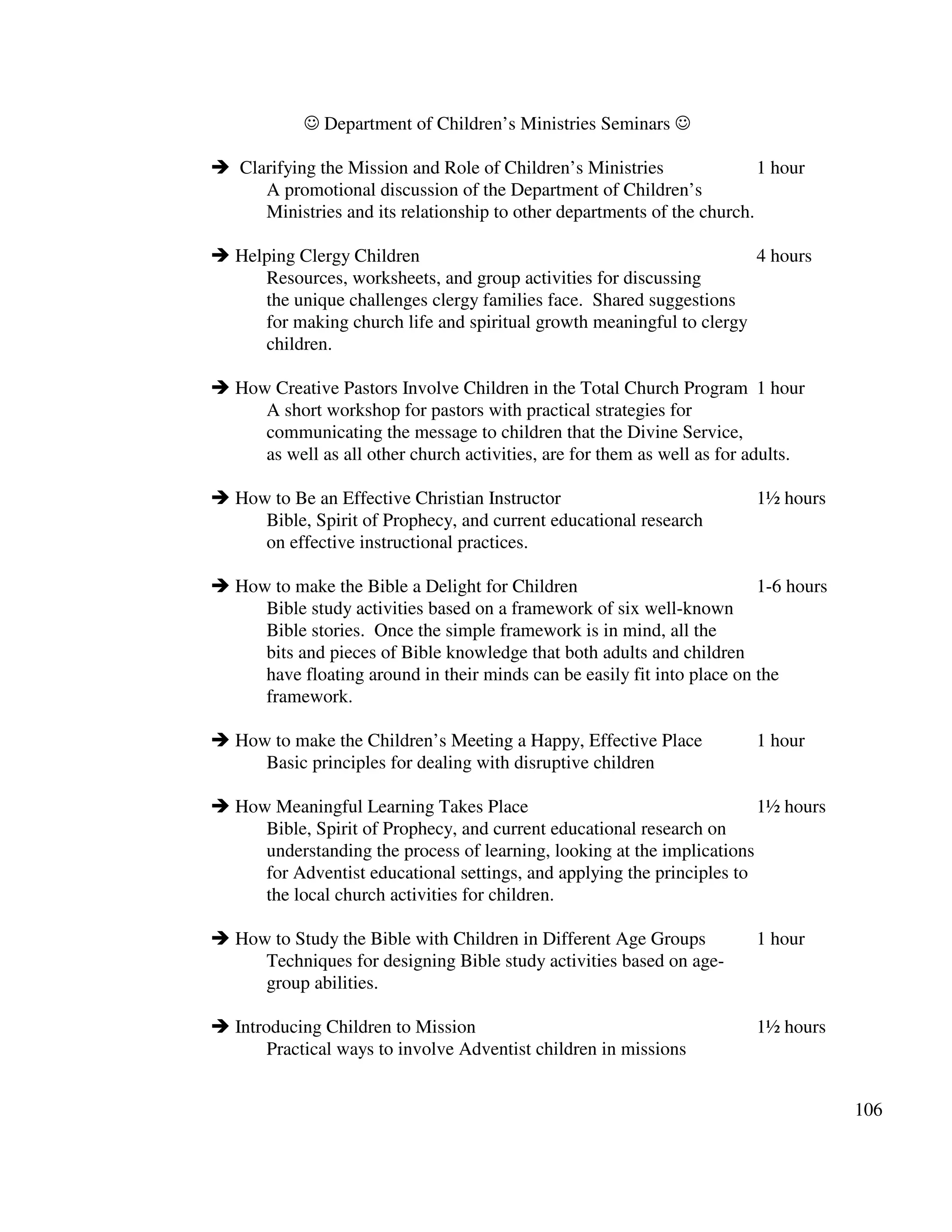
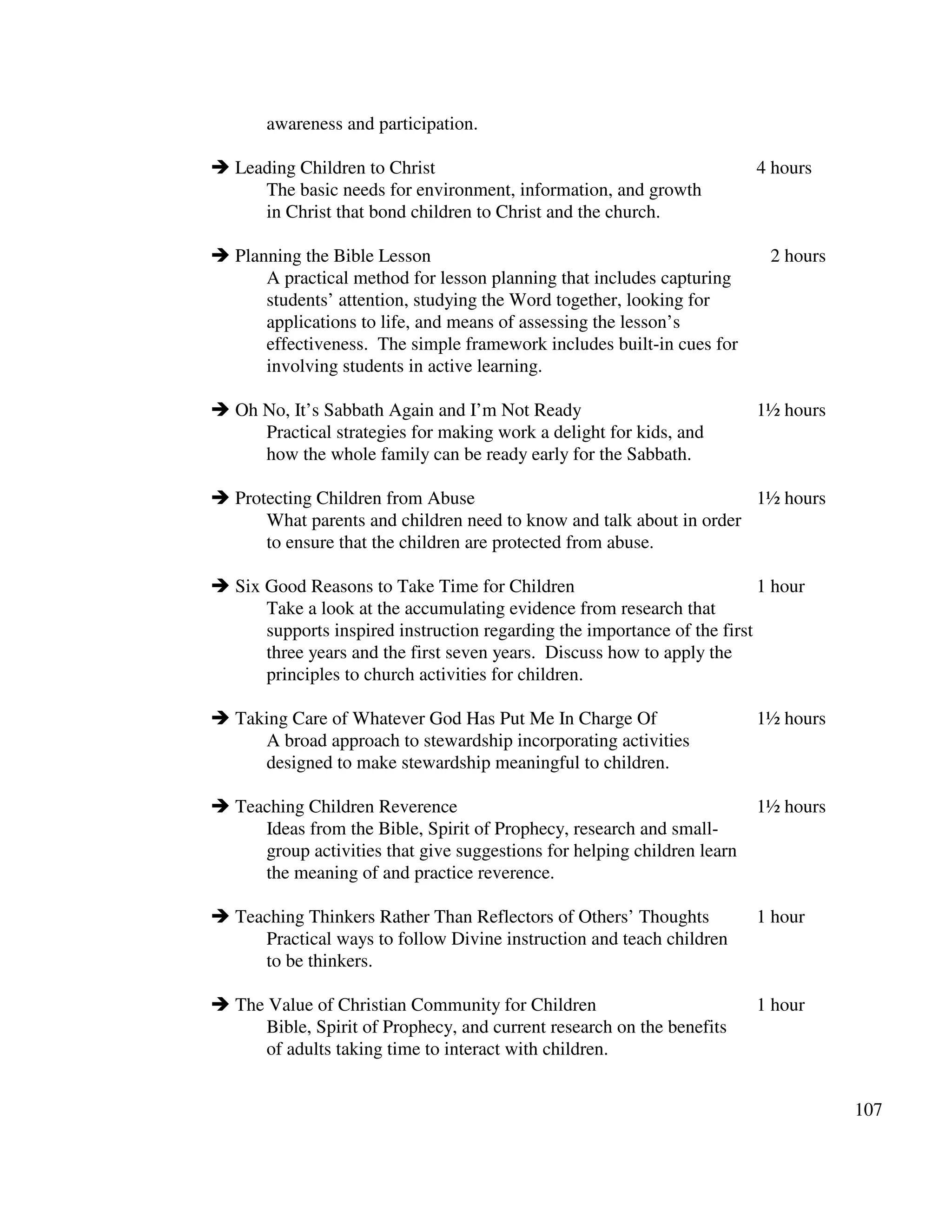
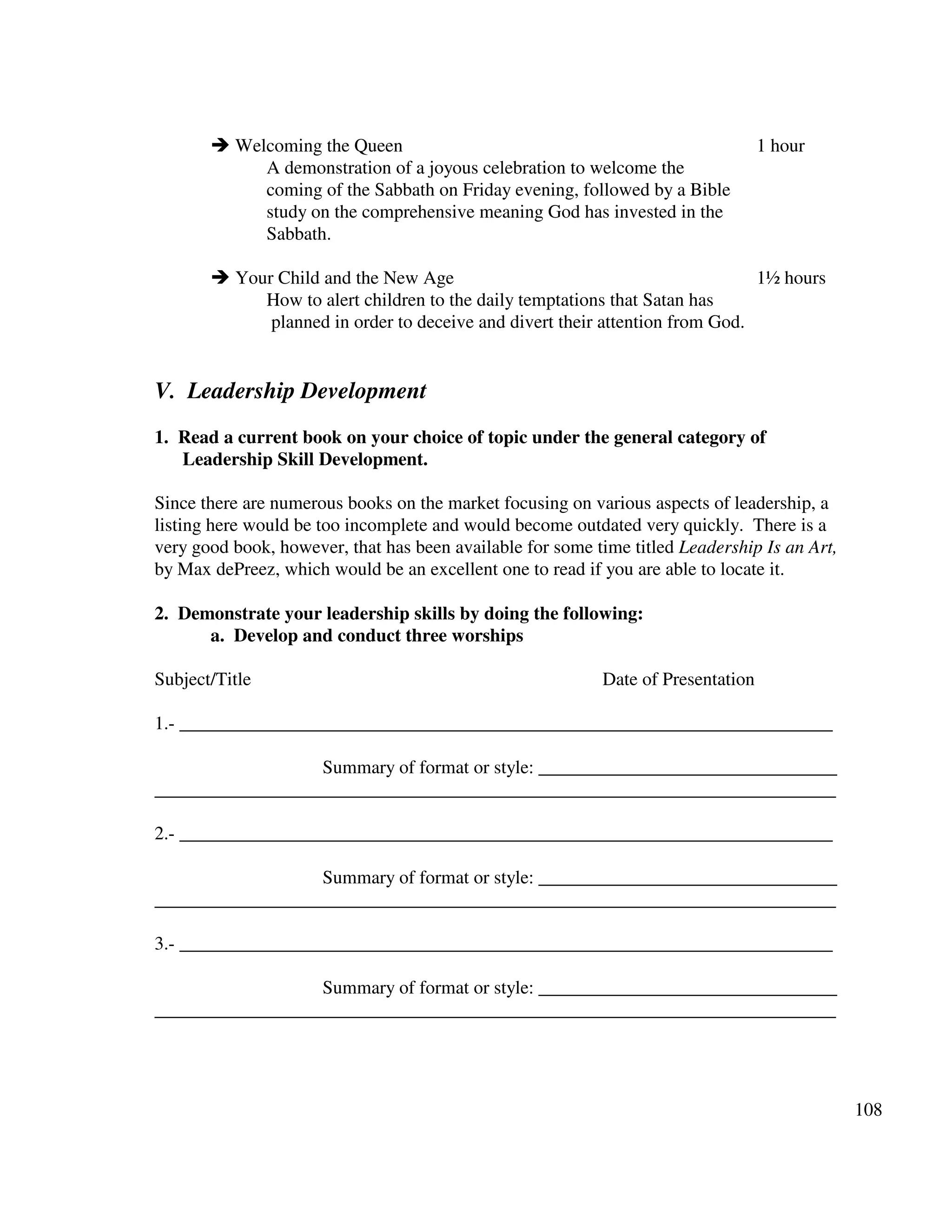




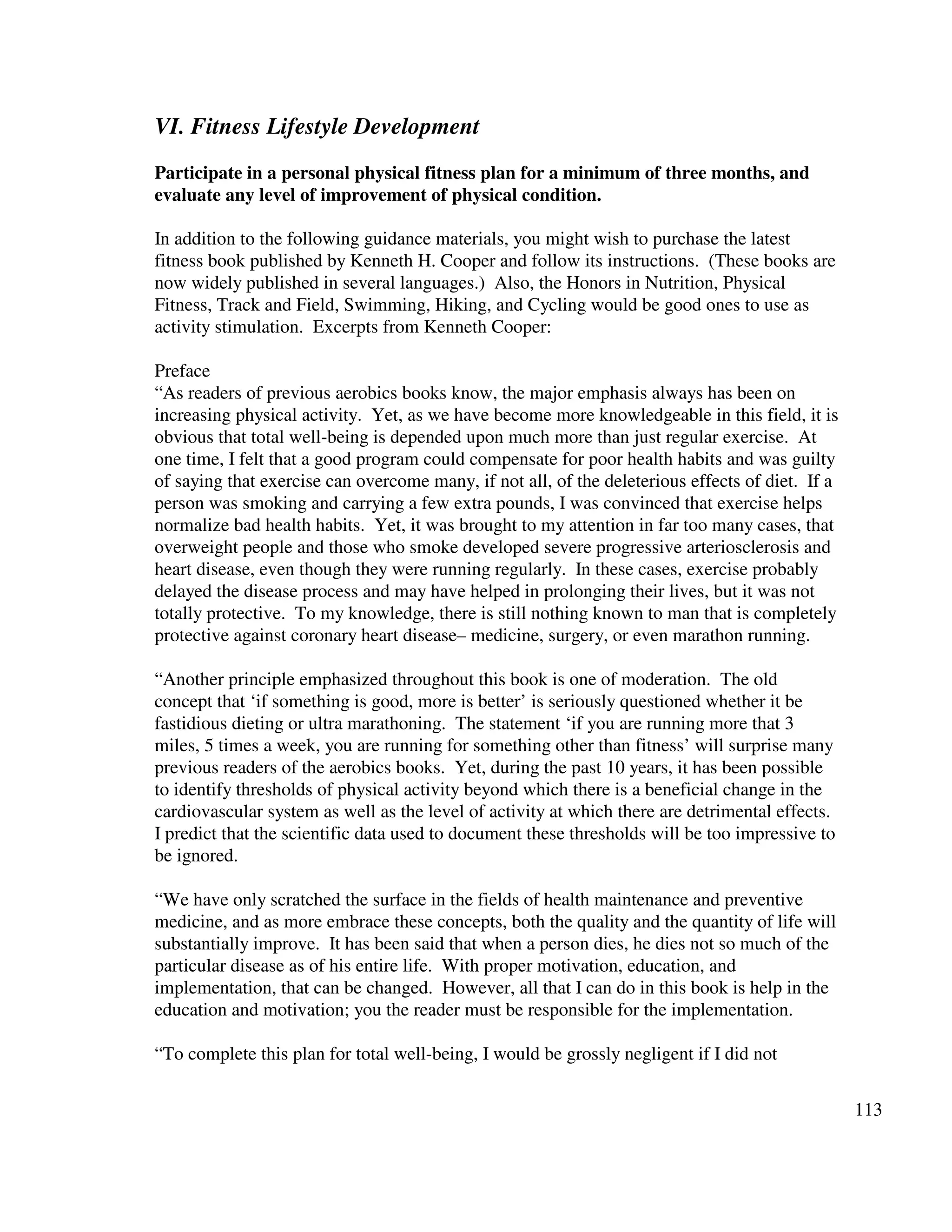
![114
emphasize the most important component, that is spiritual well-being. ‘For bodily exercise
profiteth little: but godliness is profitable unto all things, having promise of the life that
now is, and of that which is to come’” (1 Timothy 4:8 Authorized [King James] Version).
Calorie Equivalents For Popular Foods and Beverages
(Sample page)
Food Size/Serving Approx. Calories
Almonds
Apple
Apple Juice
Apricots
Asparagus
Avocado
Bagel
Banana
Lima Beans
Blueberries
Bread- Rye
- White
- Whole wheat
Broccoli
Brussels sprouts
Butter
Carrots
Cashews
Cauliflower
Celery
Cereals- bran flakes
- corn flakes
Cheese- Cheddar
Egg
Potato
Milk
Tomato
12-15 nuts
1 medium
3/4 cup
2-3 medium
5-6 spears
½
1
1 small
5/8 cup
1 cup
1 slice
1 slice
1 slice
1 stalk 5 ½ in. long (14 cm)
9 medium
1 table spoon
1 large or 2 small
6-8 nuts roasted
1 cup
1 small stalk 5 in. long ( 13 cm)
1 cup
1 cup
1 ounce
1
1 baked
2 cups whole milk
1 medium
90
87
87
51
26
185
165
85
111
87
56
62
56
32
45
108
42
84
27
3
106
110
112
80
90
320
35](https://image.slidesharecdn.com/mgmanual-150223001740-conversion-gate01/75/Mg-manual-114-2048.jpg)


